Special Report
Largest and Smallest National Parks in America
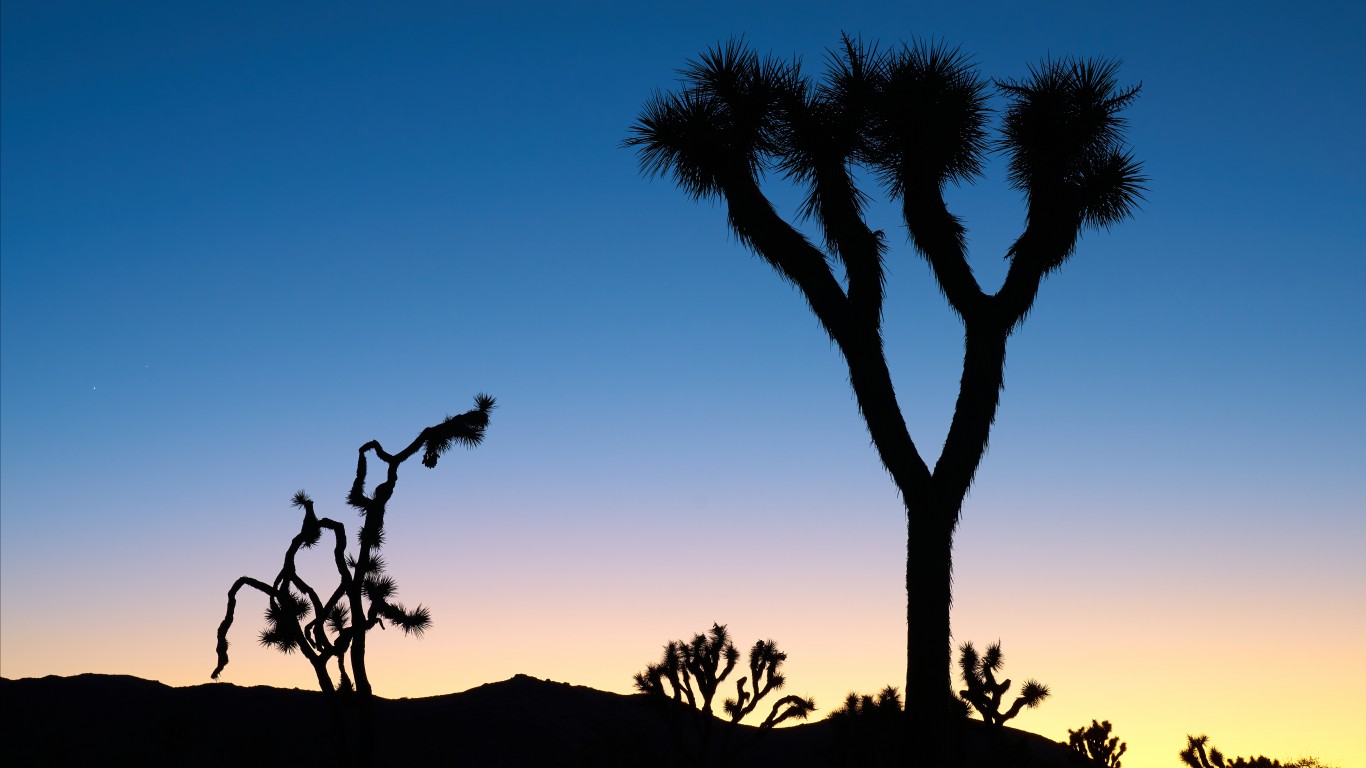
Published:

For over a century, America has set aside tens of millions of acres for people to enjoy through the National Park Service. Each year, hundreds of millions of visitors — both Americans and international — flock to these parks.
The National Parks offer something for everyone — from beaches to forest hikes as well as human-made monuments, scenic lakes, towering mountains, spectacular canyons, and more. These parks stretch over more than 52 million acres. Some are millions of acres, while others are just a few thousand.
To determine the largest and smallest national parks, 24/7 Tempo reviewed the National Park Service Land Resources Division’s Listing of Acreage report for 2020. Only national parks were considered and were ranked on their gross area acres.
Many of the largest national parks are found in Alaska, which is by far the largest U.S. state by landmass. Western states like Utah, Washington, and California are also home to several parks that combine to cover millions of acres of land.
Amid the COVID-19 pandemic, many national parks and other recreational areas run by the National Park Service were temporarily closed. National park site visits dropped by more than 90 million to 237 million visits in 2020 — the lowest level since 1980. Still, many parks welcomed millions of visitors. These are the most visited national parks in 2020.
Click here to see the largest and smallest national parks in the US
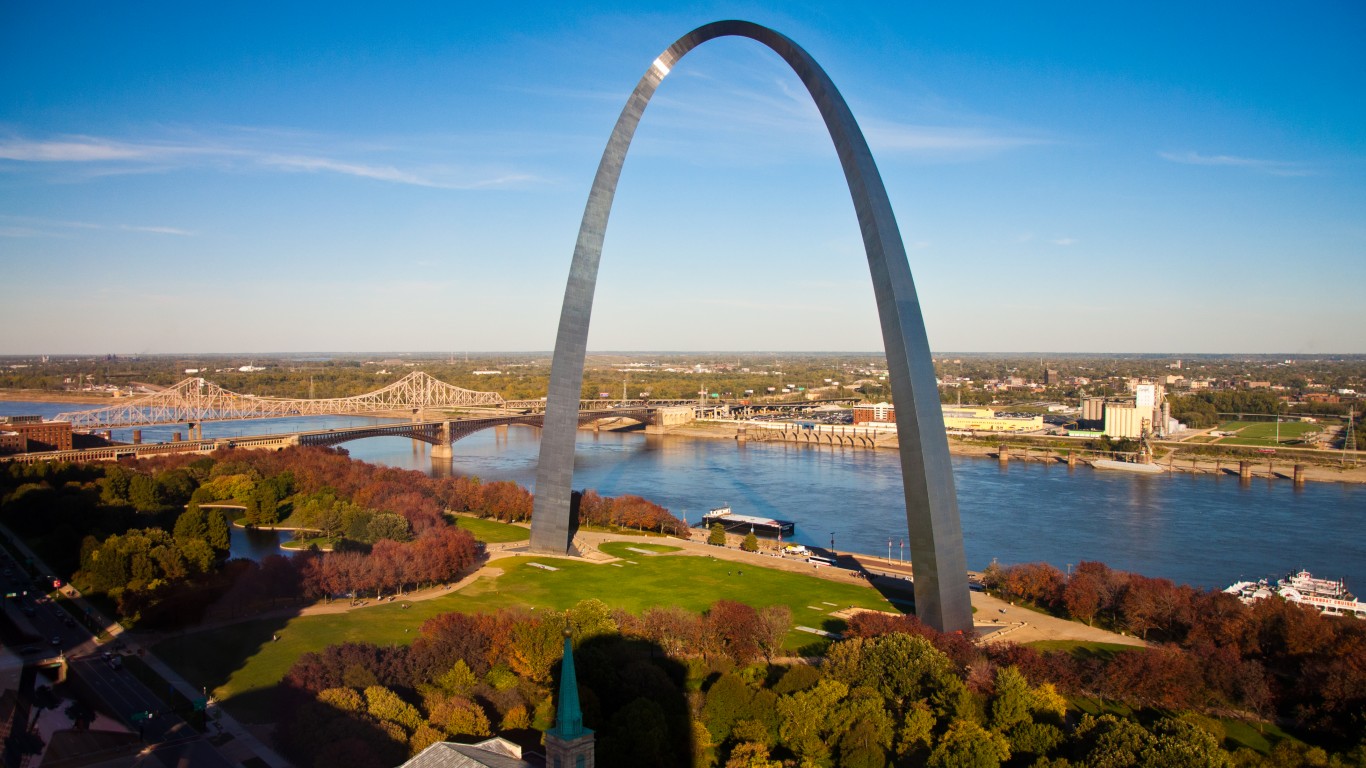
63. Gateway Arch
>Total land area: 193 acres
> Location: Missouri
> Privately owned land: 85 acres — or 44.2% of total park
> Recreation visits in 2020: 486,021 — or 0.7% of all NP visits
> 5-year change in visits: -71.4%
Gateway Arch National Park used to be called the Jefferson National Expansion Memorial. Located in St. Louis, the famous arch was built to honor Thomas Jefferson and the role he played in America’s westward expansion. The park also features the Museum of Westward Expansion, and St. Louis’ Old Courthouse. The Courthouse is best known for holding the Dred Scott case — an enslaved man who unsuccessfully sued for his freedom.
[in-text-ad]
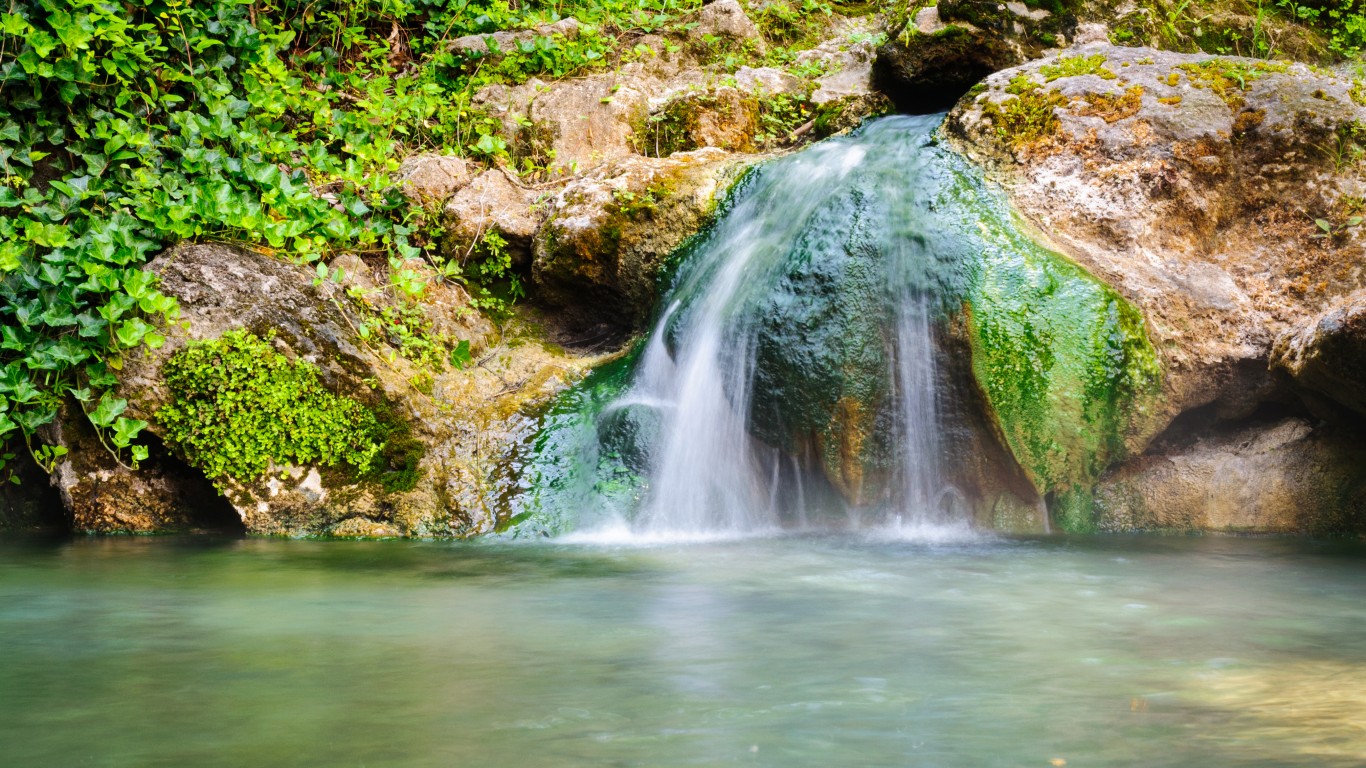
62. Hot Springs
>Total land area: 5,554 acres
> Location: Arkansas
> Privately owned land: 213 acres — or 3.8% of total park
> Recreation visits in 2020: 1,348,215 — or 2.0% of all NP visits
> 5-year change in visits: -4.9%
Hot Springs National Park’s nickname is “The American Spa.” The more than 40 hot springs in the park are a very popular natural destination for relaxation and healing. The NPS says the land was first reserved in 1832 to protect the unique geothermal spring water and associated lands for public health, wellness, and enjoyment.
61. National Park of American Samoa
>Total land area: 8,257 acres
> Location: American Samoa
> Privately owned land: 0 acres
> Recreation visits in 2020: 4,819 — or 0.01% of all NP visits
> 5-year change in visits: -65.3%
This is the only U.S. national park south of the equator. The island park is one of the most remote national parks in the system. Visitors get to enjoy tropical rainforests, coral reefs, and about 4,000 acres of ocean surrounding the islands.
60. Virgin Islands
>Total land area: 15,052 acres
> Location: Virgin Islands
> Privately owned land: 1,706 acres — or 11.3% of total park
> Recreation visits in 2020: 167,540 — or 0.2% of all NP visits
> 5-year change in visits: -61.8%
The Virgin Island National Park, located east of Puerto Rico, covers roughly 60% of Saint John Island and almost all of Hassel Island. The park is home to the iconic Trunk Bay. The entire park, known for its steep mountains, deep valleys, and white-sand beaches, was a designated UNESCO World Network Biosphere Reserve until 2017.
59. Indiana Dunes
>Total land area: 15,349 acres
> Location: Indiana
> Privately owned land: 829 acres — or 5.4% of total park
> Recreation visits in 2020: 2,293,106 — or 3.4% of all NP visits
> 5-year change in visits: 39.8%
Spanning 15 miles of coastline on the southern shore of Lake Michigan, Indian Dunes National Park has over 50 miles of dune trails, as well as beaches, wetlands, rivers, forests, and prairies.
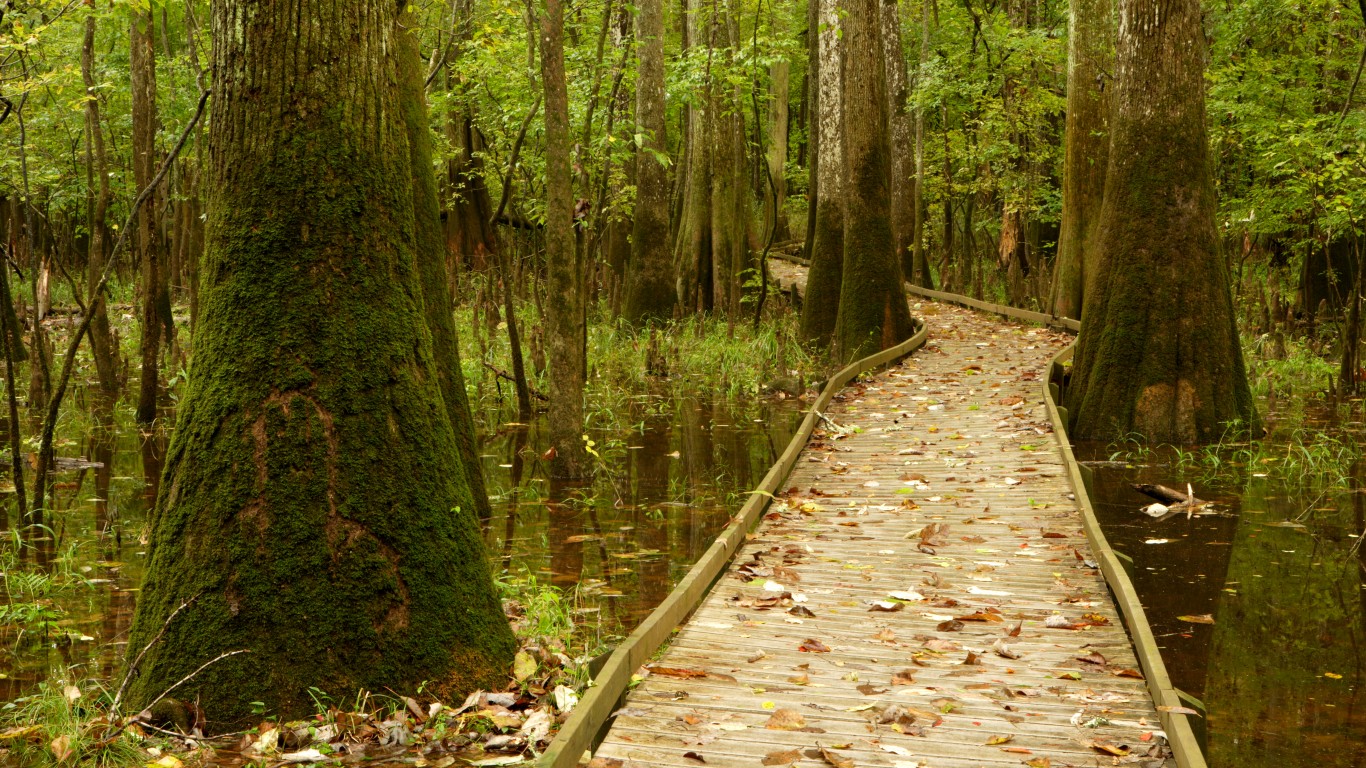
58. Congaree
>Total land area: 26,476 acres
> Location: South Dakota
> Privately owned land: 92 acres — or 0.3% of total park
> Recreation visits in 2020: 119,306 — or 0.2% of all NP visits
> 5-year change in visits: 36.3%
One of the newest parks in the National Park Service, Congaree received its designation as a national park in 2003 after years of campaigning. Once there, visitors can go on an owl prowl, a nighttime trek where the eerie calls of owls are heard. The park is named after the Congaree Native American tribe that once lived in the area before European settlers.
57. Pinnacles
>Total land area: 26,686 acres
> Location: California
> Privately owned land: 11 acres — or 0.04% of total park
> Recreation visits in 2020: 165,740 — or 0.2% of all NP visits
> 5-year change in visits: -19.8%
The park was “born of fire,” the NPS explains, when multiple volcanoes erupted 23 million years ago. Lava flowed and later solidified, eventually becoming the ground for the Pinnacles National Park. The park is known for its rare talus caves â hikers’ favorite.
[in-text-ad-2]
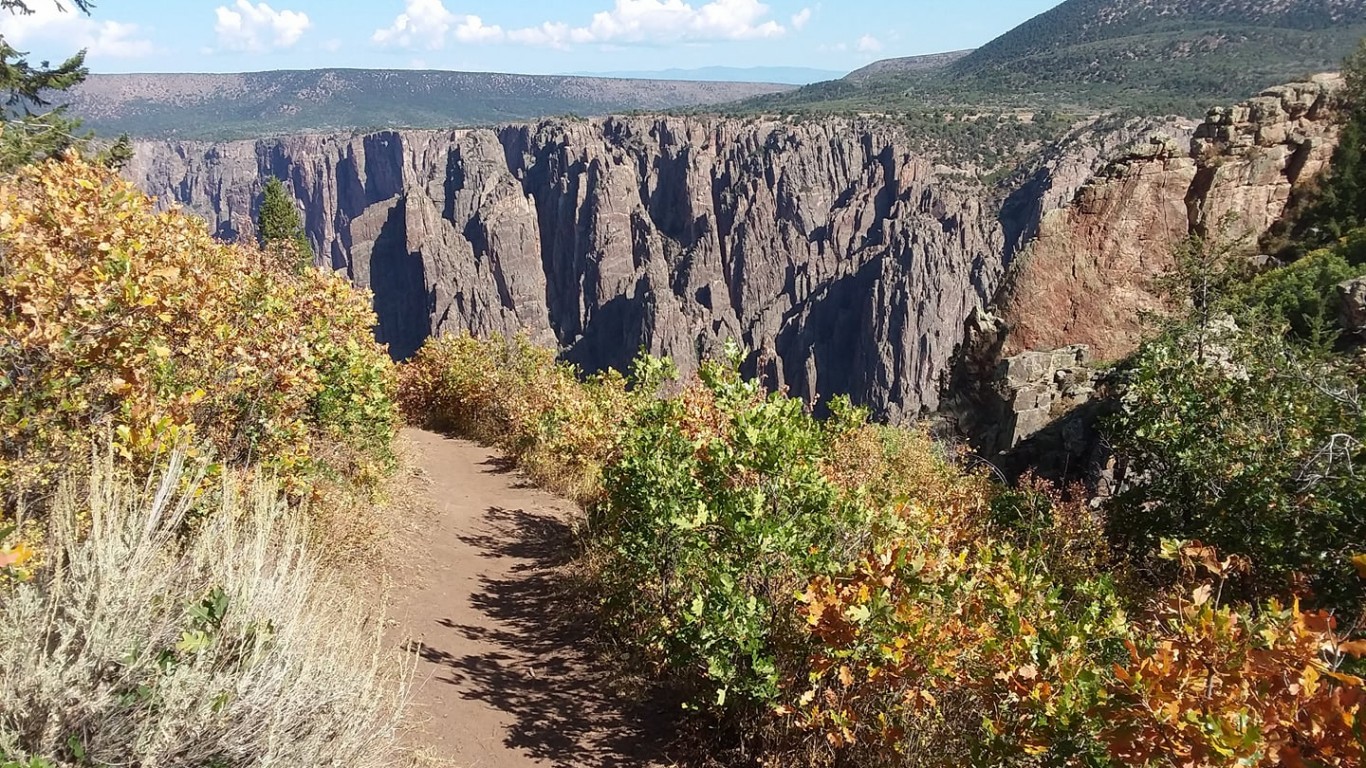
56. Black Canyon of the Gunnison
>Total land area: 30,780 acres
> Location: Colorado
> Privately owned land: 33 acres — or 0.1% of total park
> Recreation visits in 2020: 341,620 — or 0.5% of all NP visits
> 5-year change in visits: 63.3%
The second least-visited of the four national parks in Colorado, Black Canyon of the Gunnison encompasses the most scenic section of Black Canyon, a 2,000-foot deep, 48-mile long canyon with scrub oak foliage visible along the rim. Aspen groves along Oak Flat Loop Trail also provide autumn color.
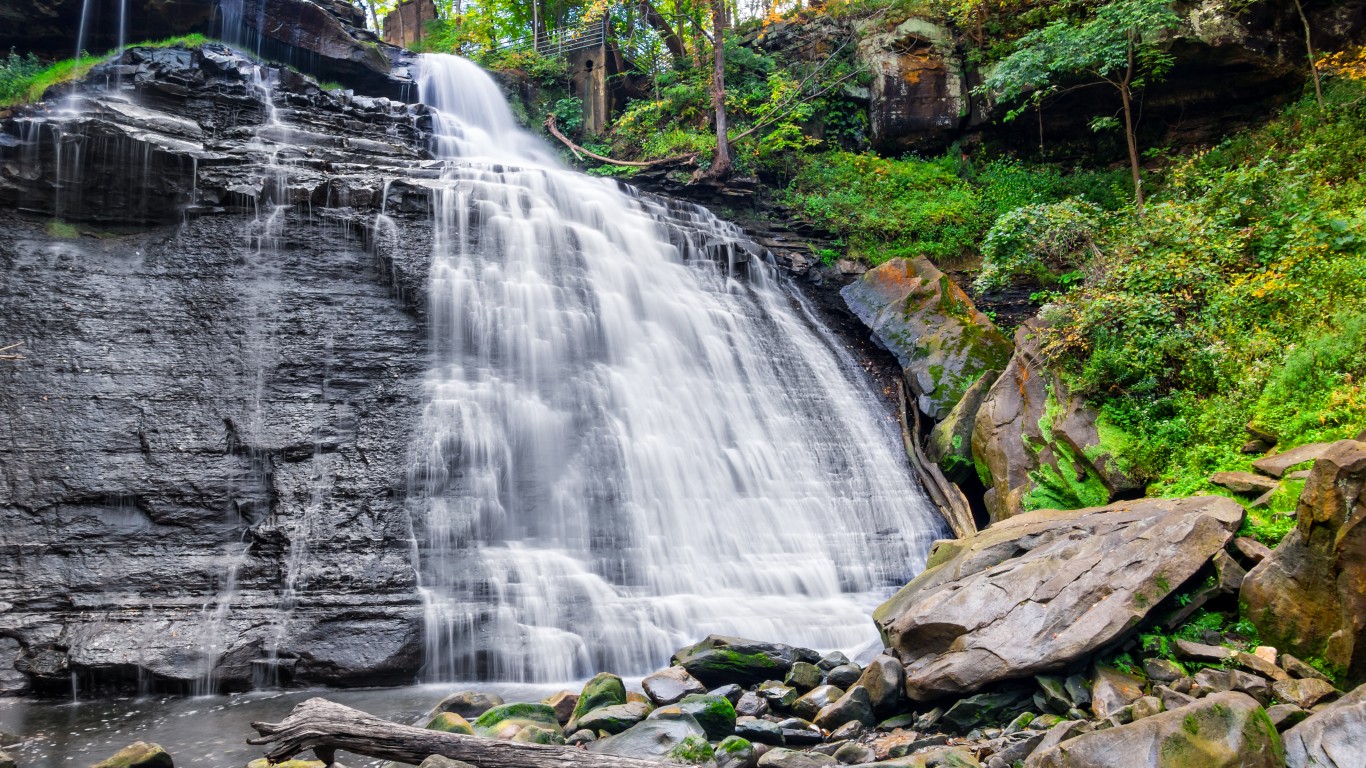
55. Cuyahoga Valley
>Total land area: 32,572 acres
> Location: Ohio
> Privately owned land: 3,601 acres — or 11.1% of total park
> Recreation visits in 2020: 2,755,628 — or 4.1% of all NP visits
> 5-year change in visits: 20.6%
The Cuyahoga Valley National Park, which became a national park in 2000, features rugged gorges, tree-lined hills, and marshes. Also in the nearly 33,000-acre park is a trail that follows the route of the historic Ohio & Erie Canal, which linked the Midwest to the burgeoning markets in the east.
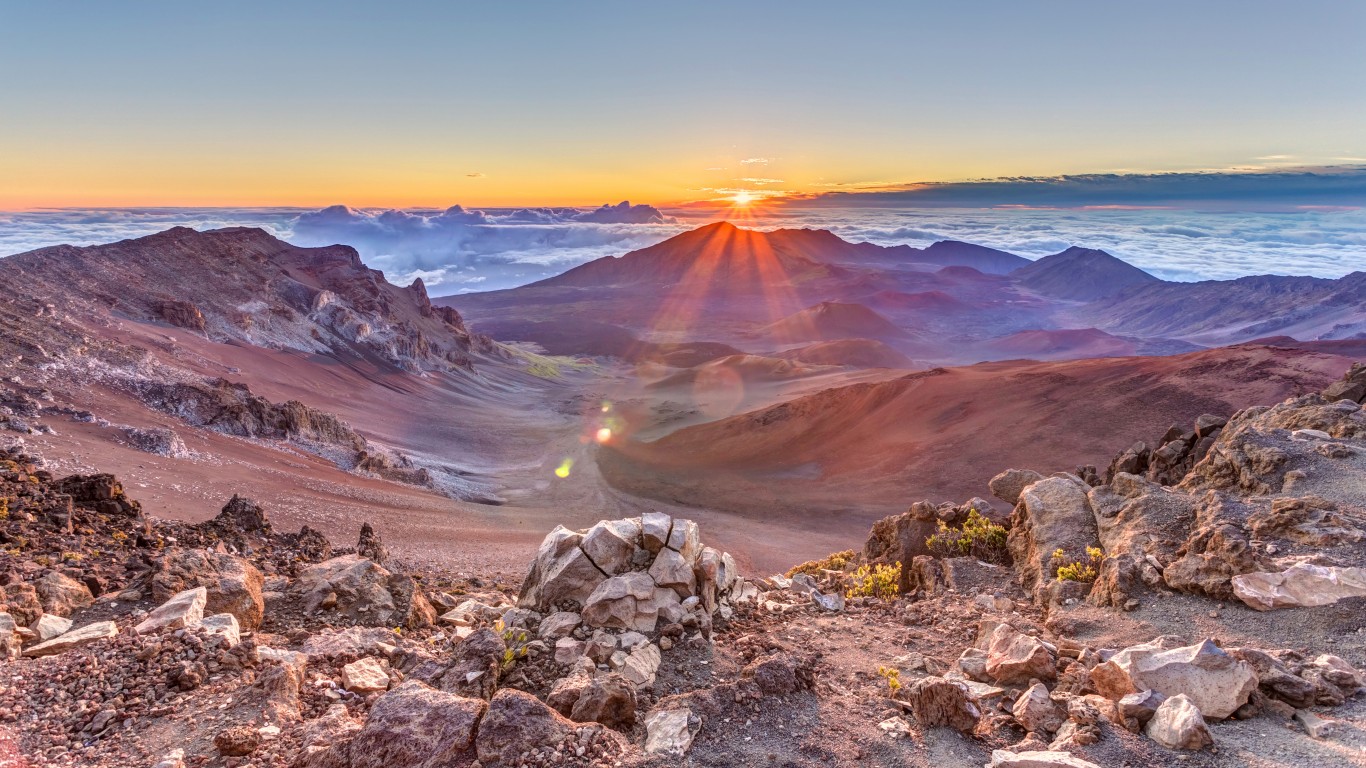
54. Haleakala
>Total land area: 33,265 acres
> Location: Hawaii
> Privately owned land: 0 acres
> Recreation visits in 2020: 319,147 — or 0.5% of all NP visits
> 5-year change in visits: -73.8%
Haleakala National Park, meaning “house of the sun” in Hawaiian, is located on the island of Maui. The park is named after a dormant volcano of the same name and covers an area of more than 30,000 acres, most of which is wilderness. The famous Haleakala Crater, located at 10,023 feet above sea level, was where legend has it the demigod Maui lassoed the sun, slowing the sunset, thus making days longer.
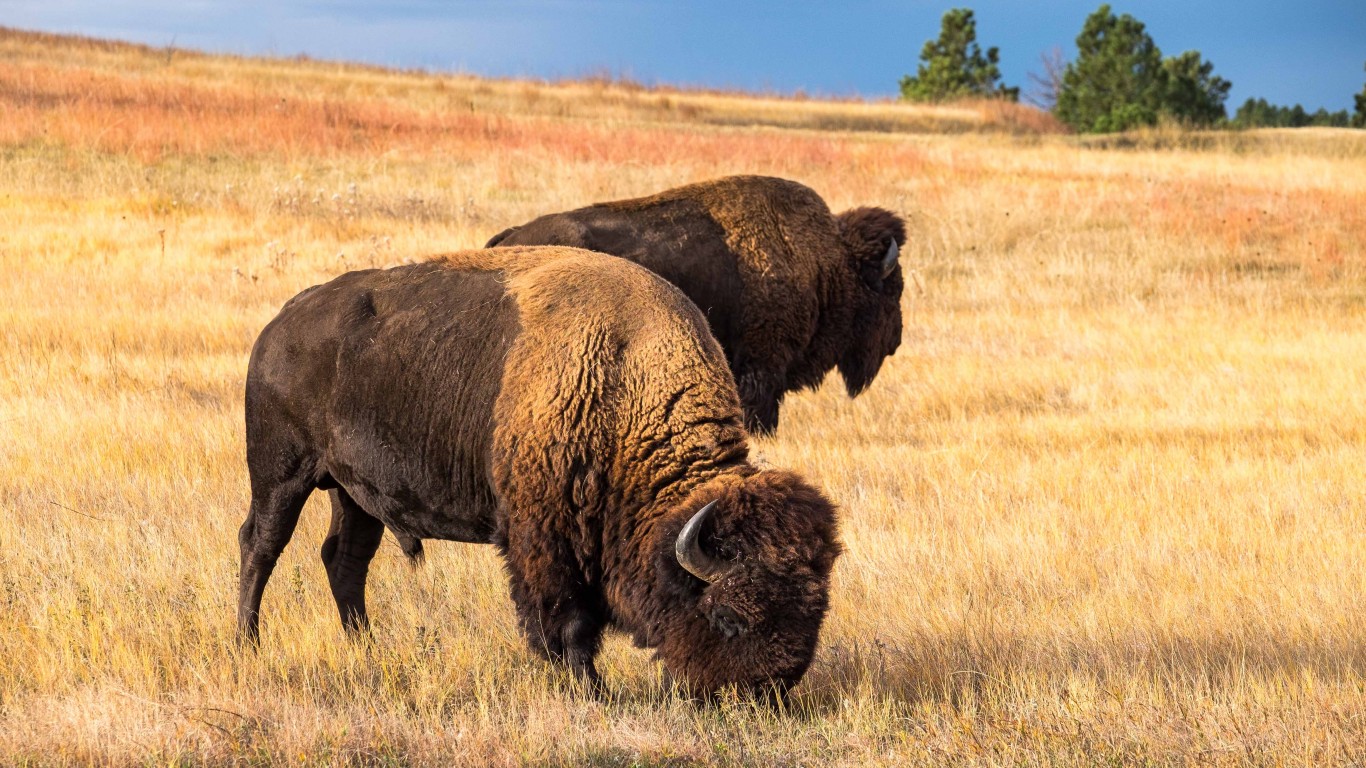
53. Wind Cave
>Total land area: 33,971 acres
> Location: South Dakota
> Privately owned land: 0 acres
> Recreation visits in 2020: 448,405 — or 0.7% of all NP visits
> 5-year change in visits: -26.8%
The Wind Cave National Park, the first cave system in the world designated as a national park, is home to one of the world’s longest caves — at least 149 miles. The park was named for barometric winds at its entrance. Aside from the park’s collection of caves, tourists go for the more than 28,000 acres of mixed-grass prairie.
[in-text-ad]
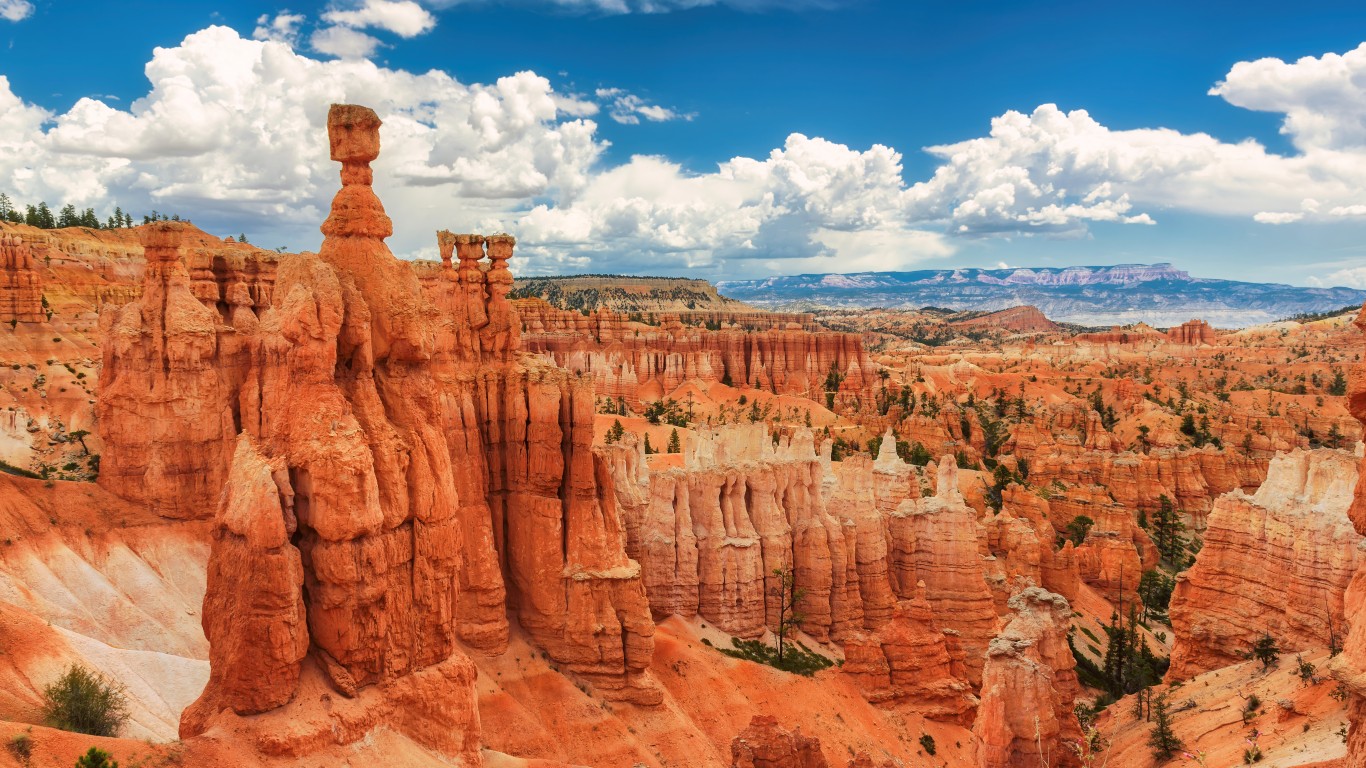
52. Bryce Canyon
>Total land area: 35,835 acres
> Location: Utah
> Privately owned land: 3 acres — or 0.01% of total park
> Recreation visits in 2020: 1,464,655 — or 2.2% of all NP visits
> 5-year change in visits: -16.1%
Already known for its red and pink striped rock formations, Bryce Canyon takes on another layer of colorful contrast as quaking aspens turn bright yellow against the evergreens and the world’s largest concentration of hoodoos — tall, skinny spires of rock that rise from arid basins.
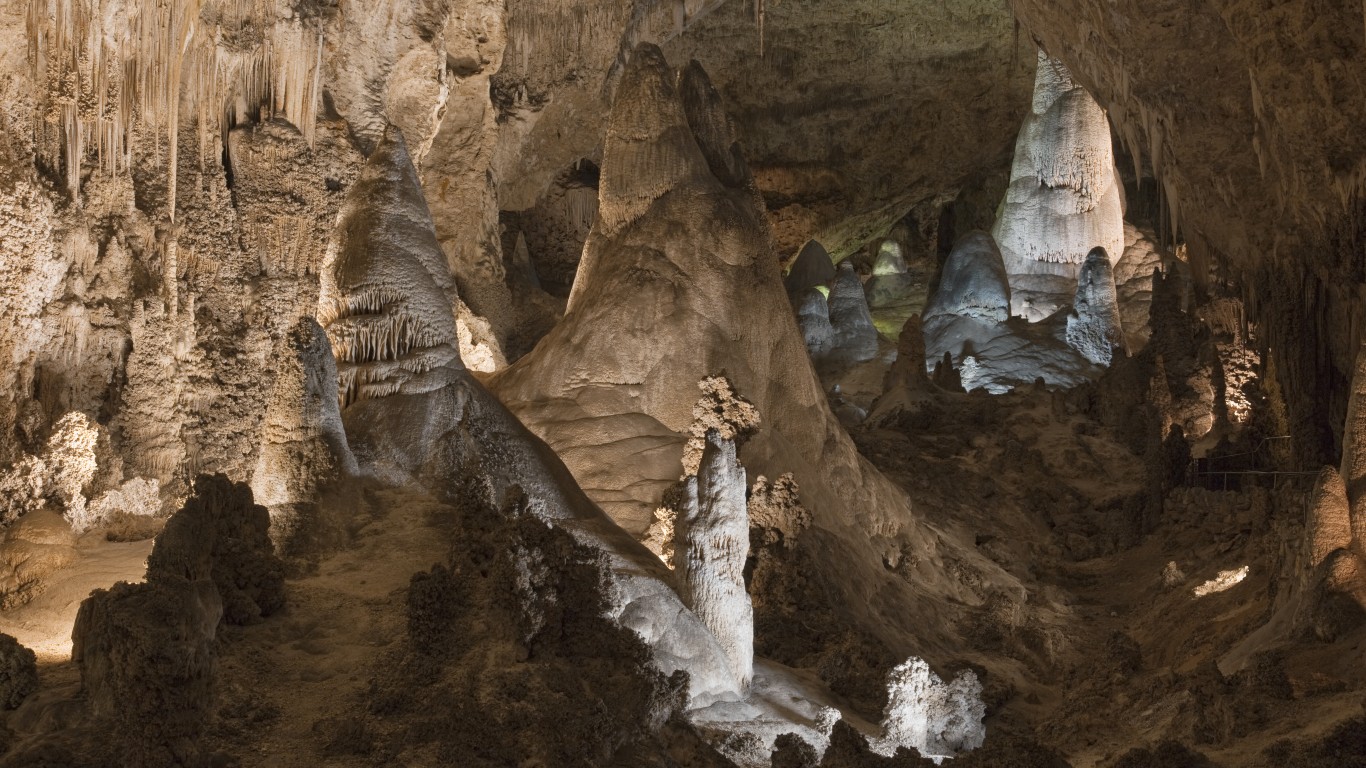
51. Carlsbad Caverns
>Total land area: 46,766 acres
> Location: New Mexico
> Privately owned land: 339 acres — or 0.7% of total park
> Recreation visits in 2020: 183,835 — or 0.3% of all NP visits
> 5-year change in visits: -58.8%
In the desert of New Mexico lies Carlsbad Caverns National Park. There are more than 100 known caves in the park. Carlsbad Cavern, the park’s most popular attraction and its namesake, was formed between 4 million and 6 million years ago.
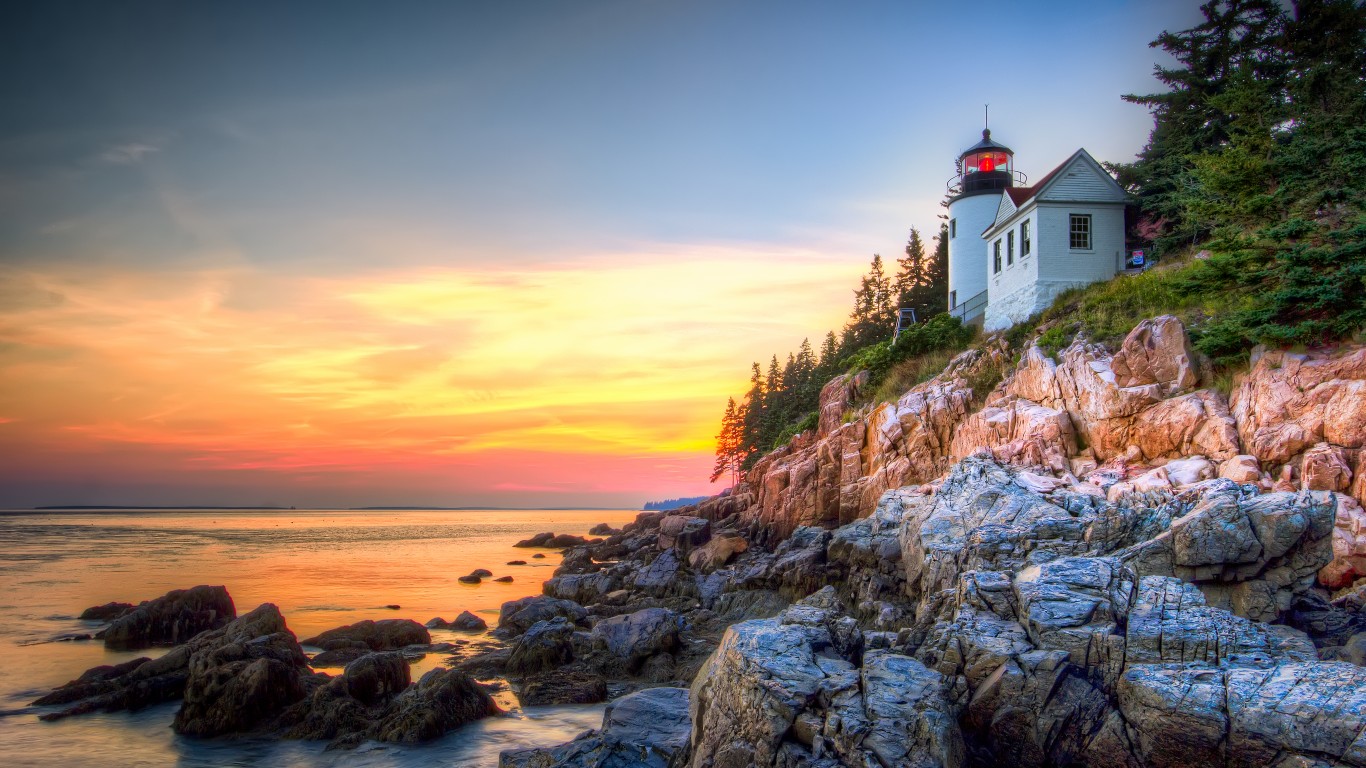
50. Acadia
>Total land area: 49,077 acres
> Location: Maine
> Privately owned land: 821 acres — or 1.7% of total park
> Recreation visits in 2020: 2,669,034 — or 3.9% of all NP visits
> 5-year change in visits: -5.1%
Autumn can be busy in Acadia National Park as leaf-peepers flood the roads, but in mid-October the crowds die down and the trees still boast an array of colors. From the wetlands to the rocky shoreline to the mountain peaks, Acadia’s diverse landscape is awash with colors until late October.
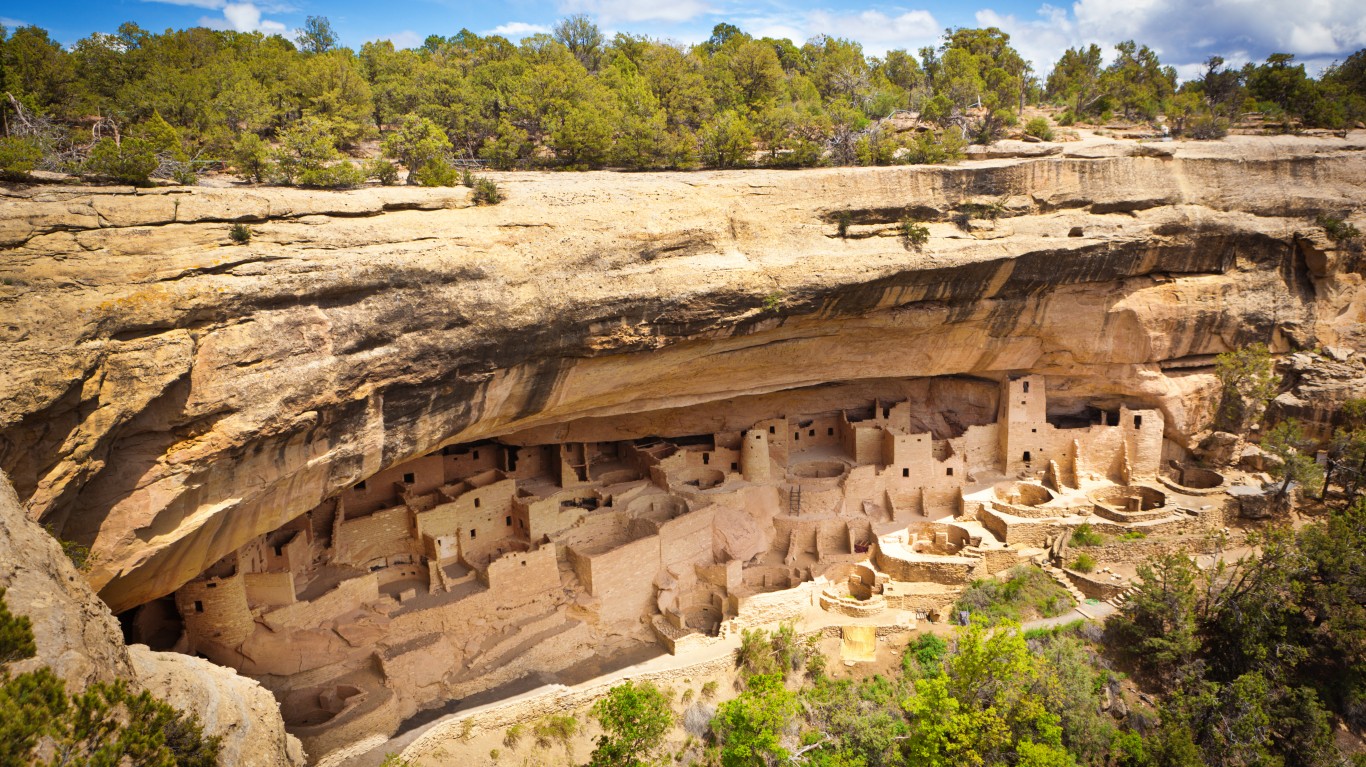
49. Mesa Verde
>Total land area: 52,485 acres
> Location: Colorado
> Privately owned land: 191 acres — or 0.4% of total park
> Recreation visits in 2020: 287,477 — or 0.4% of all NP visits
> 5-year change in visits: -47.5%
Mesa Verde National Park houses 600 Pueblo cliff dwellings that were occupied between A.D. 600 and 1300. They’re some of the best-preserved cliff dwellings in the country. In the autumn the park turns fiery red with gambel oak foliage, especially at the lower elevations near the park’s entrance.
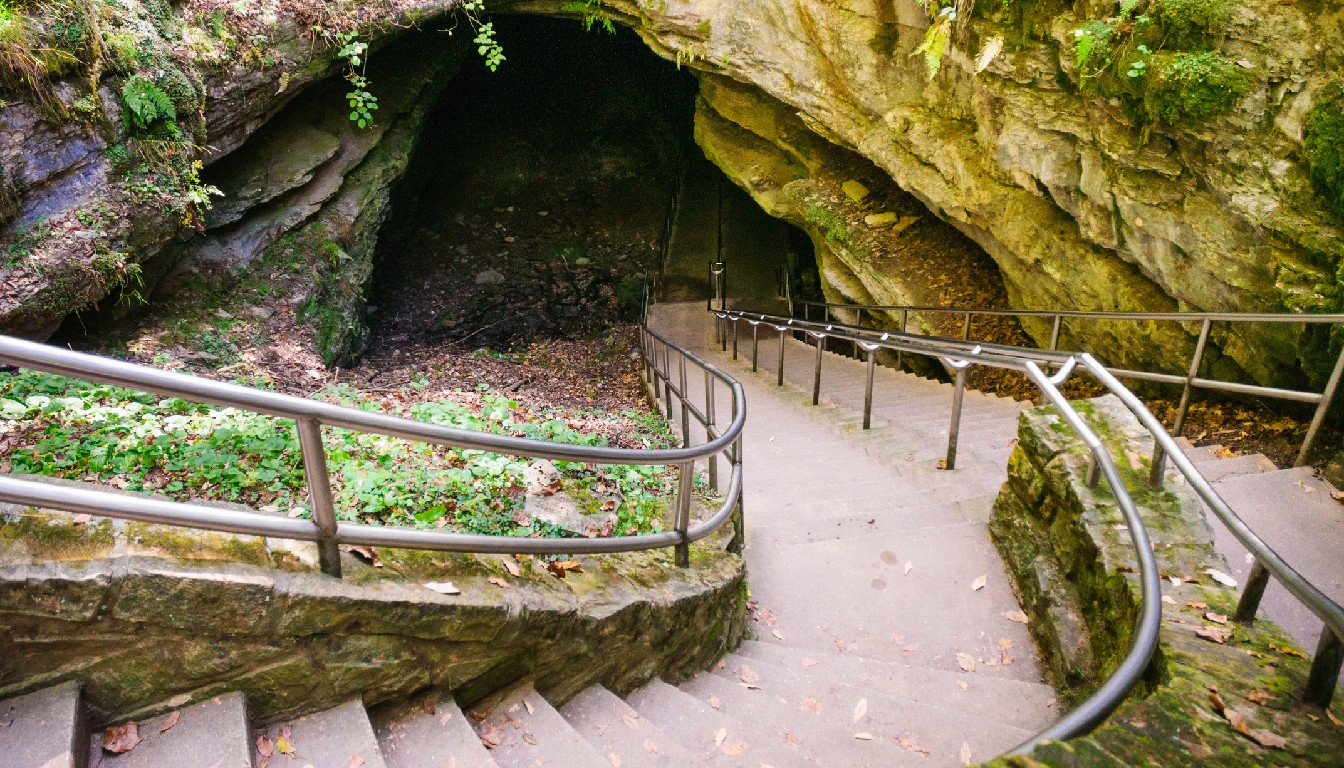
48. Mammoth Cave
>Total land area: 54,012 acres
> Location: Kentucky
> Privately owned land: 1,194 acres — or 2.2% of total park
> Recreation visits in 2020: 290,392 — or 0.4% of all NP visits
> 5-year change in visits: -48.8%
Though known for its massive cavern, Mammoth Cave National Park also contains woodlands and rolling hills that provide for a classic deciduous forest color display in November. The park is much less crowded than other Southern parks, though it sees a high number of non-recreational visitors (researchers, commuters, conference attendees).
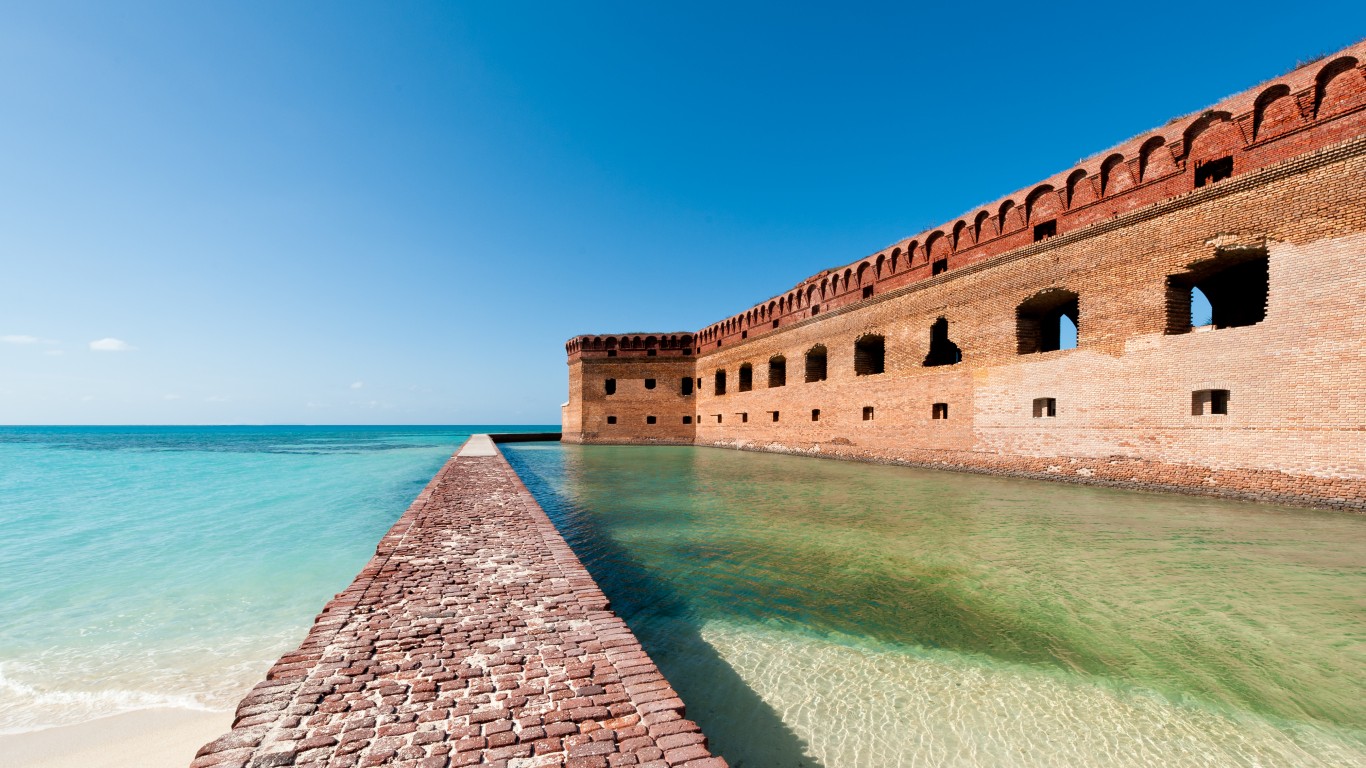
47. Dry Tortugas
>Total land area: 64,701 acres
> Location: Florida
> Privately owned land: 0 acres
> Recreation visits in 2020: 48,543 — or 0.1% of all NP visits
> 5-year change in visits: -31.5%
[in-text-ad-2]
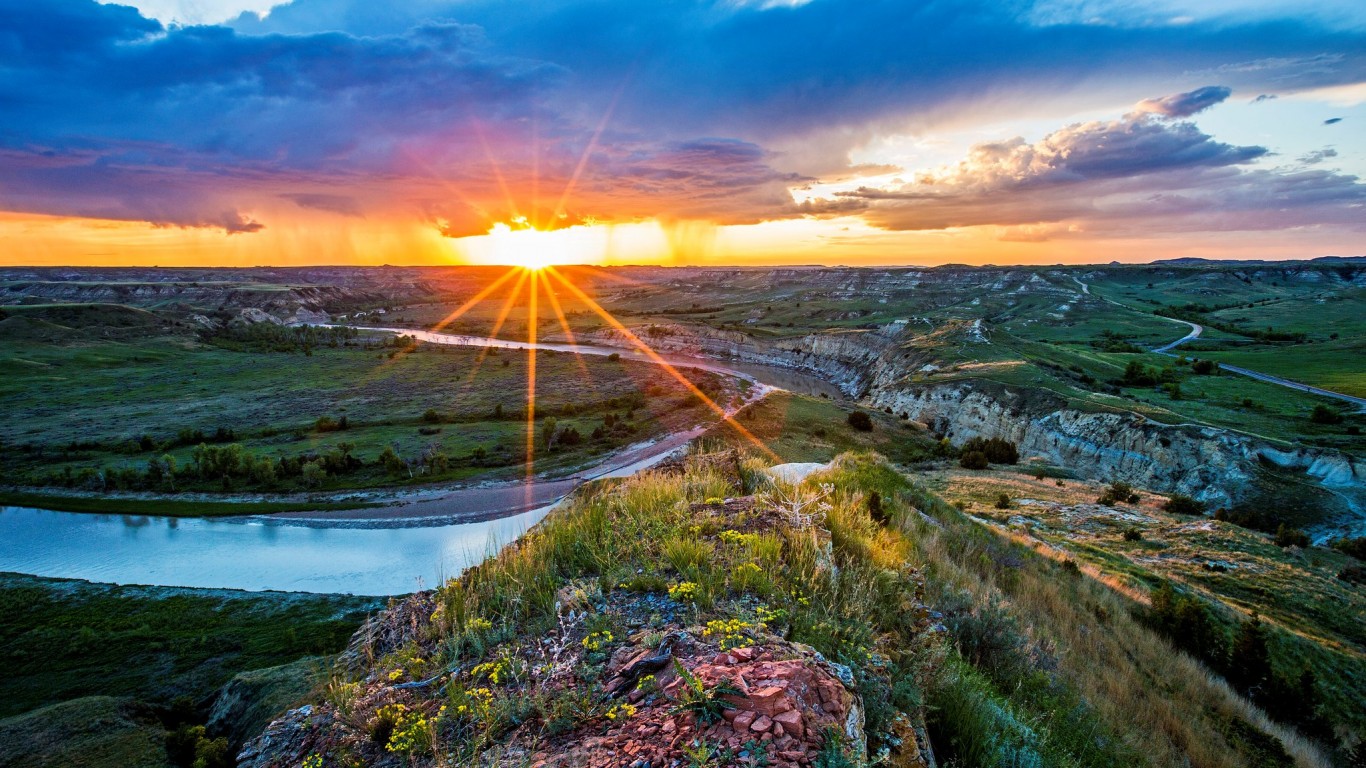
46. Theodore Roosevelt
>Total land area: 70,447 acres
> Location: ND
> Privately owned land: 690 acres — or 1.0% of total park
> Recreation visits in 2020: 551,303 — or 0.8% of all NP visits
> 5-year change in visits: -5.0%
A drive along the Theodore Roosevelt National Park North Unit Scenic Byway is sure to dazzle, as the banks of the Little Missouri River are lined with aspens that blaze orange and yellow in autumn. Wildlife is abundant among the prairies, buttes, and sandstone spires that make up the park.
45. New River Gorge
>Total land area: 72,186 acres
> Location: Washington
> Privately owned land: 13,724 acres — or 19.1% of total park
> Recreation visits in 2020: 1,054,374 — or 1.6% of all NP visits
> 5-year change in visits: -10.6%
Officially the New River Gorge National Park & Preserve, the area was designated as a national park in 2020, making it the newest addition to the NPS system of national parks. No one is sure about when the region, which covers more than 70,000 acres of land along the New River, was formed, though experts agree it was at least 3 million years ago, though some believe it is over 320 million years old.
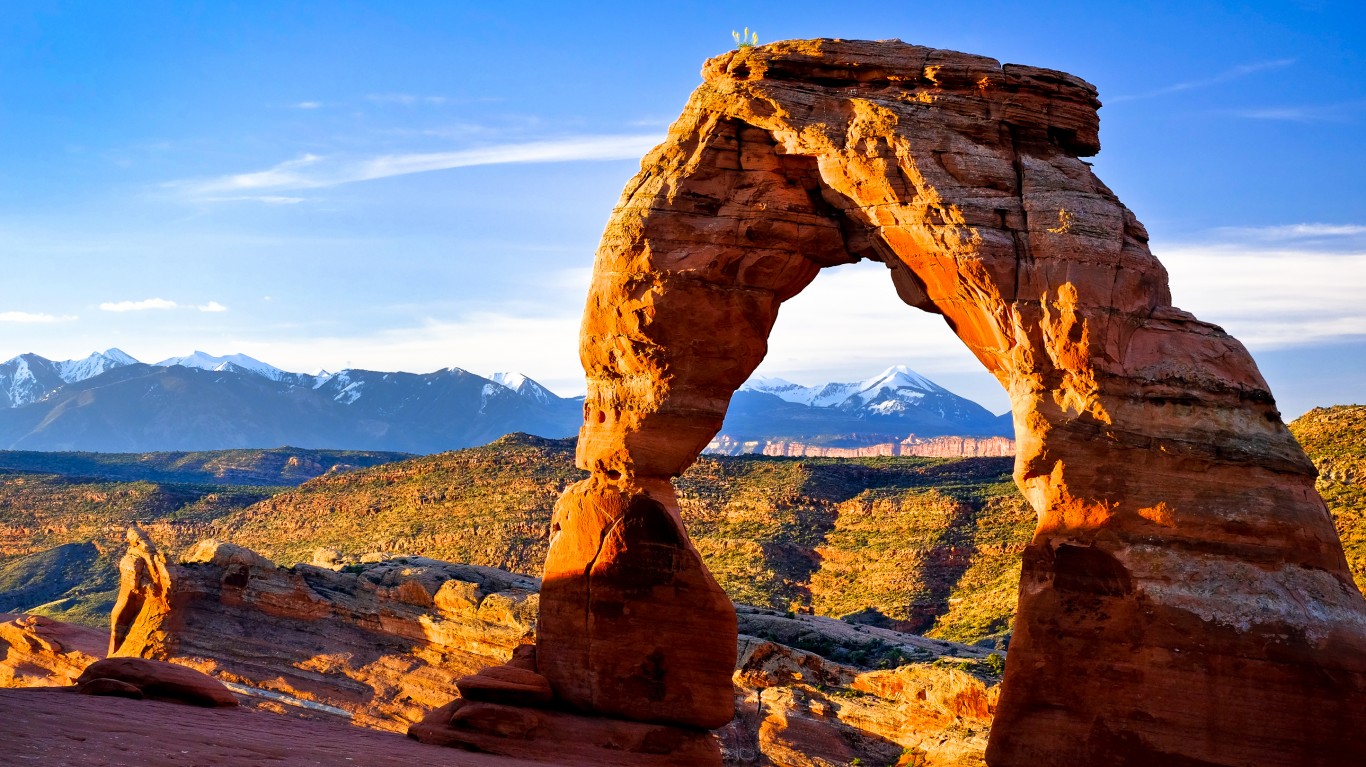
44. Arches
>Total land area: 76,679 acres
> Location: Utah
> Privately owned land: 0 acres
> Recreation visits in 2020: 1,238,083 — or 1.8% of all NP visits
> 5-year change in visits: -11.5%
Arches National Park has more than 2,000 stone arches but the 65-foot tall Delicate Arch, the largest free-standing in the park, is by far the most famous and popular attraction. The trail to see it is 3 miles round trip and climbs 480 feet.
43. Great Basin
>Total land area: 77,180 acres
> Location: Nevada
> Privately owned land: 0 acres
> Recreation visits in 2020: 120,248 — or 0.2% of all NP visits
> 5-year change in visits: 3.6%
Aspens along Wheeler Peak scenic drive provide fall color amid a backdrop of bare mountains and evergreen forest in this eastern Nevada national park. Home to the Lehman Caves and some of the oldest trees on earth, the bristlecone pines, this lesser-known national park is a hidden gem.
[in-text-ad]
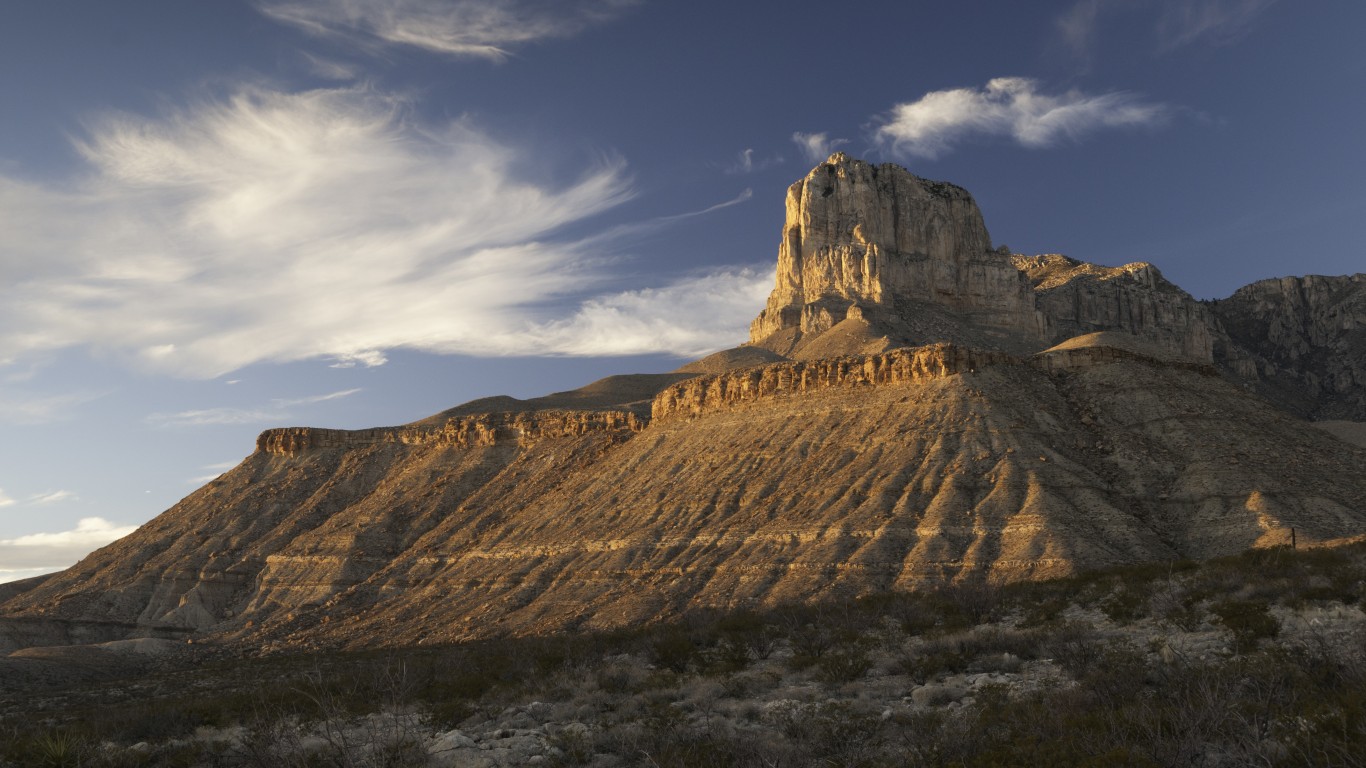
42. Guadalupe Mountains
>Total land area: 86,367 acres
> Location: Texas
> Privately owned land: 0 acres
> Recreation visits in 2020: 151,256 — or 0.2% of all NP visits
> 5-year change in visits: -10.8%
The Guadalupe Peak may be the highest point in Texas now, but 265 million years ago, the mountains were under water and part of an elaborate coral reef that stretched about 400 miles. Humans have inhabited the area for more than 10,000 years, though the area is now very remote.
41. Saguaro
>Total land area: 92,867 acres
> Location: Arizona
> Privately owned land: 1,644 acres — or 1.8% of total park
> Recreation visits in 2020: 762,226 — or 1.1% of all NP visits
> 5-year change in visits: 1.2%
The Saguaro National Park is well known for its preservation and abundance of cacti. The park is home to the country’s largest cacti, a symbol of the American West. The park is just northwest of Tucson, making it one of few national parks that border a big city. It has expanded since its official designation as a national park in 1994 after people have made several land donations.
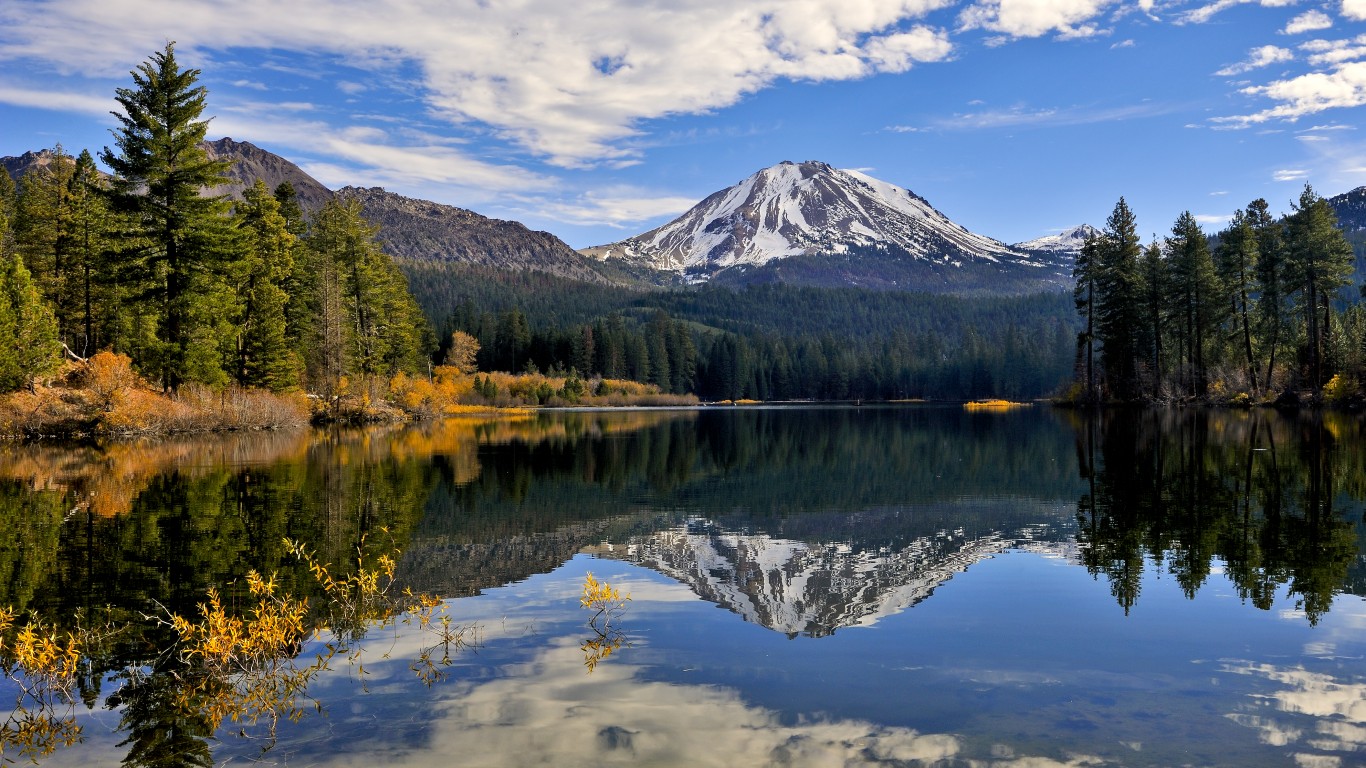
40. Lassen Volcanic
>Total land area: 106,589 acres
> Location: California
> Privately owned land: 84 acres — or 0.1% of total park
> Recreation visits in 2020: 542,274 — or 0.8% of all NP visits
> 5-year change in visits: 15.8%
In addition to four types of volcanoes — shield, plug dome, composite, and cinder cone — Lassen Volcanic National Park also has oak, aspen, and sagebrush that turn golden in autumn. Head to Manzanita Lake for a colorful view in front of Lassen Peak, a 10,457-foot active volcano that last erupted in 1914.
39. Great Sand Dunes
>Total land area: 107,342 acres
> Location: Colorado
> Privately owned land: 12,614 acres — or 11.8% of total park
> Recreation visits in 2020: 461,532 — or 0.7% of all NP visits
> 5-year change in visits: 54.1%
With a backdrop of the Sangre de Cristo Mountains, and Medano Creek running through the valley, Great Sand Dunes National Park is more than just sand. It is a prime viewing spot for the aspen, sumac, and cottonwood foliage, which peak through mid-October.
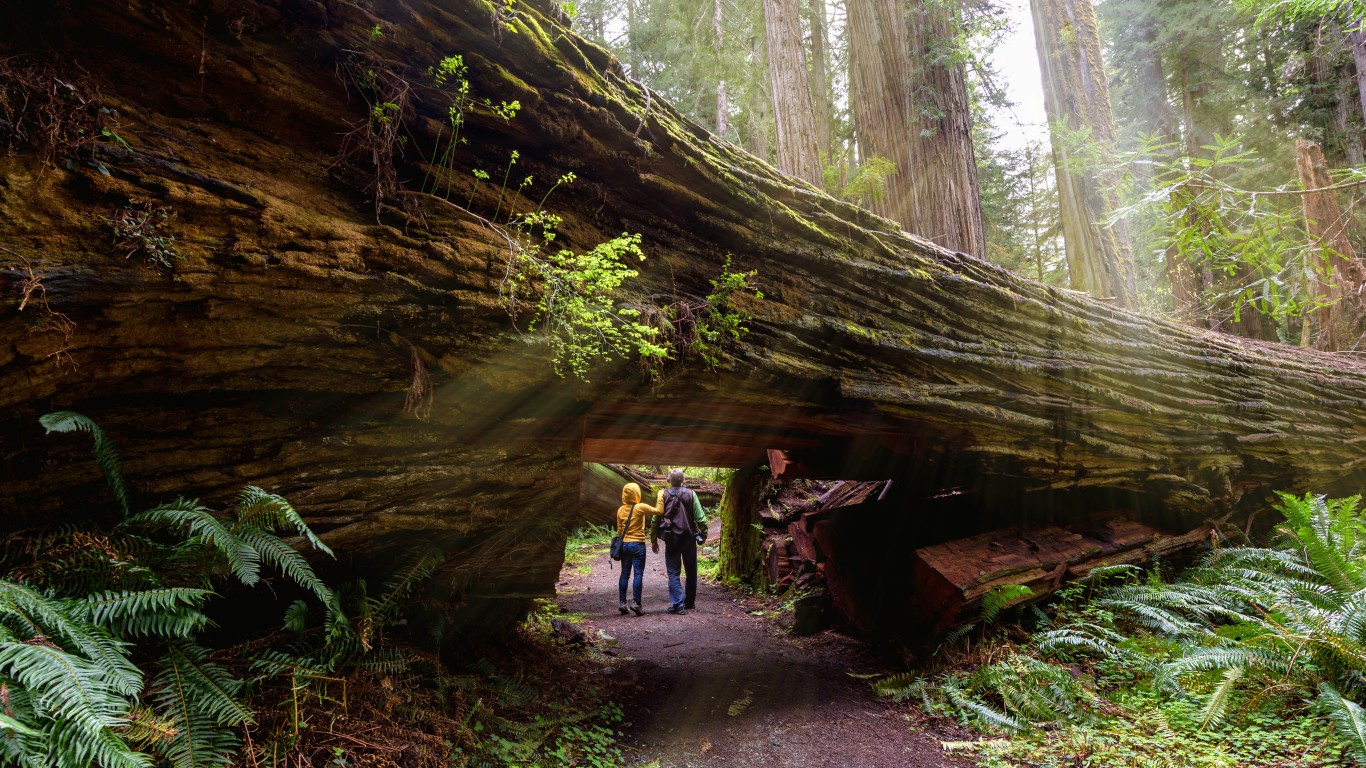
38. Redwood
>Total land area: 138,999 acres
> Location: California
> Privately owned land: 151 acres — or 0.1% of total park
> Recreation visits in 2020: 265,177 — or 0.4% of all NP visits
> 5-year change in visits: -49.7%
Getting to Redwood National Park requires a scenic drive along California’s coastal Route 101, so keep an eye out for migratory birds, gray whales, seals, and sea lions. Once you’re in the park, you can witness some of the tallest, oldest, and largest coastal redwoods.
37. White Sands
>Total land area: 146,344 acres
> Location: New Mexico
> Privately owned land: 0 acres
> Recreation visits in 2020: 415,383 — or 0.6% of all NP visits
> 5-year change in visits: -16.5%
The White Sands National Park is the largest gypsum dune field in the world. Gypsum is rarely seen as sand, as it dissolves in water, but New Mexico’s dry climate has preserved the dunes. The pure white sand mounds stretch for 275 square miles near Alamogordo.
[in-text-ad-2]
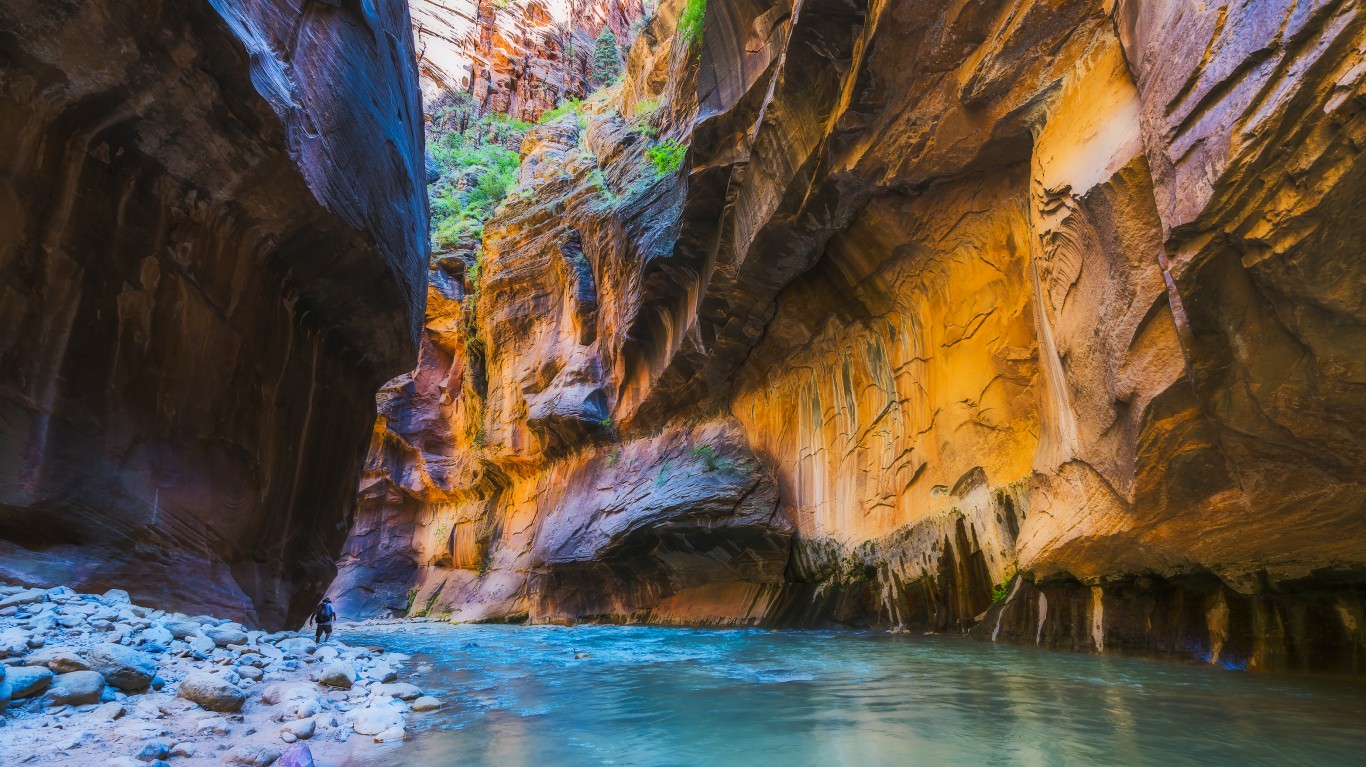
36. Zion
>Total land area: 147,243 acres
> Location: Utah
> Privately owned land: 3,444 acres — or 2.3% of total park
> Recreation visits in 2020: 3,591,254 — or 5.3% of all NP visits
> 5-year change in visits: -1.6%
The red sandstone canyons and cliffs that Zion is famous for only become more picturesque as autumn colors engulf the lowlands and river flats. Late October is a great time to view the foliage, when crowds are thin and temperatures are comfortable. A free shuttle bus ride down the Zion Canyon Scenic Byway — which is closed to private vehicles through November, when the shuttle stops running — is one of the best ways to easily take in the scenery.
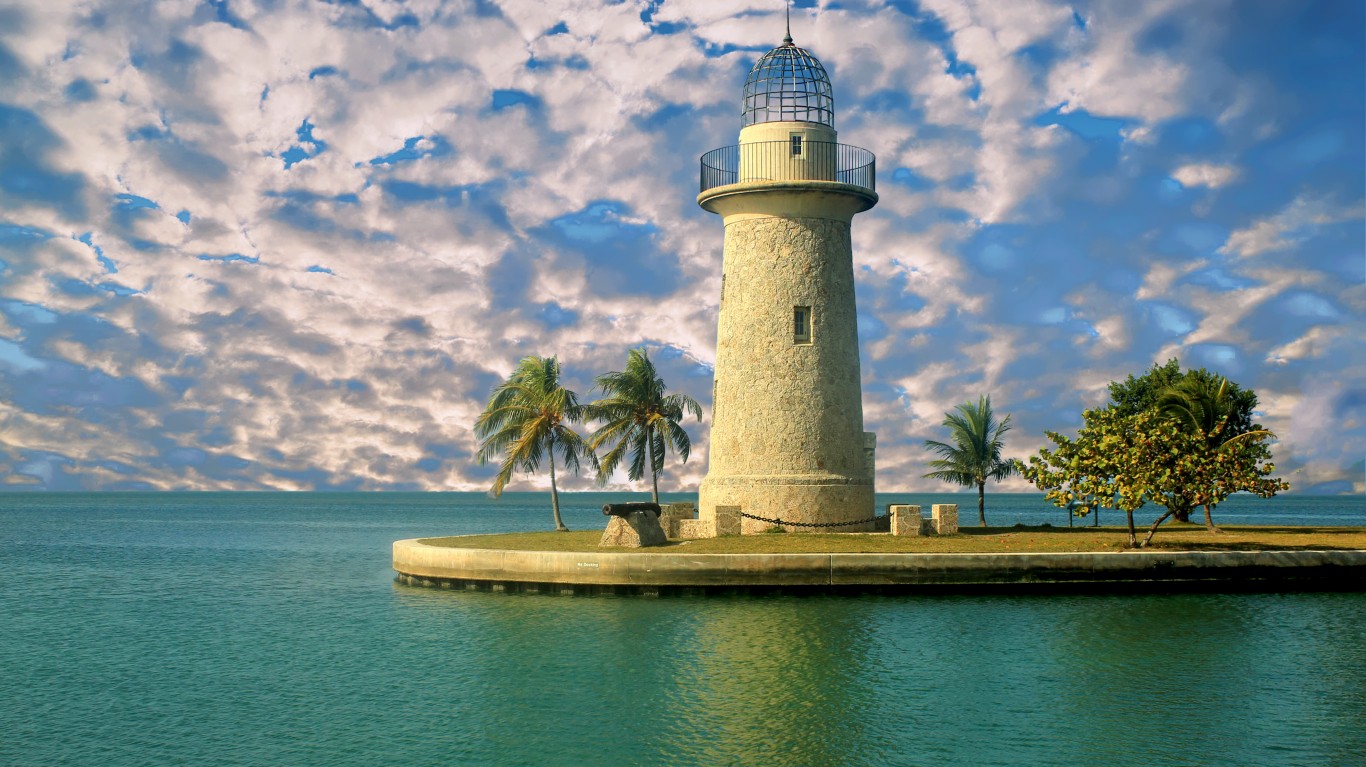
35. Biscayne
>Total land area: 172,971 acres
> Location: Florida
> Privately owned land: 360 acres — or 0.2% of total park
> Recreation visits in 2020: 402,770 — or 0.6% of all NP visits
> 5-year change in visits: -20.7%
Biscayne National Park, located in southern Florida, includes coral reefs and islands that are accessible only by boat. The park, which is 95% water, covers over 250 square miles of open water. The underwater Maritime Heritage Trail links dive sites, most of which are actual shipwrecks.
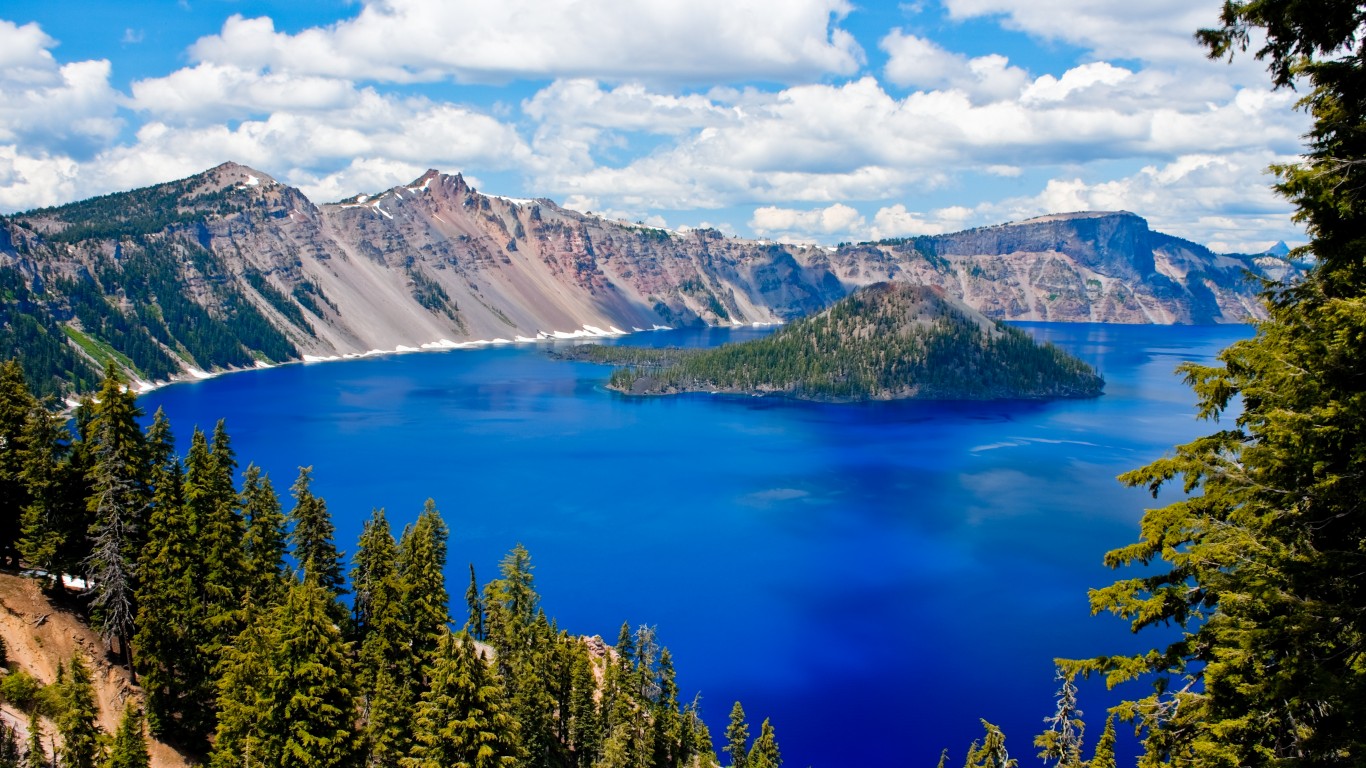
34. Crater Lake
>Total land area: 183,224 acres
> Location: Oregon
> Privately owned land: 0 acres
> Recreation visits in 2020: 670,500 — or 1.0% of all NP visits
> 5-year change in visits: 9.1%
The deepest lake in the United States, Crater Lake was formed just 7,700 years ago during a volcanic eruption. The waters are incredibly blue and clean and create a marvelous backdrop for the fiery foliage visible in autumn. Be sure to come in by mid-October before snow starts to accumulate.
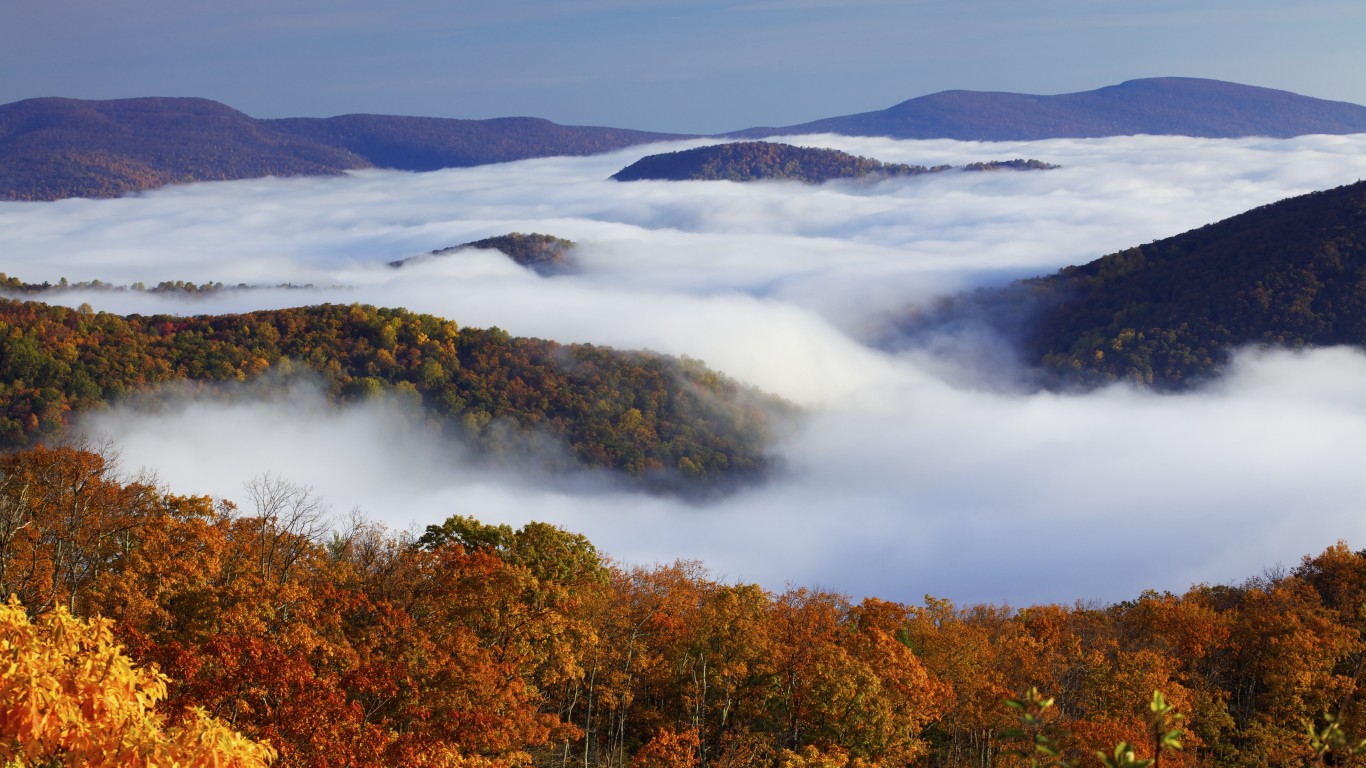
33. Shenandoah
>Total land area: 199,224 acres
> Location: Virginia
> Privately owned land: 791 acres — or 0.4% of total park
> Recreation visits in 2020: 1,666,265 — or 2.5% of all NP visits
> 5-year change in visits: 26.1%
Shenandoah National Park, which covers nearly 200,000 acres of forests and mountains, extends along the Blue Ridge Mountains in Virginia. Two of the biggest attractions of the park are the Skyline Drive — the only public road through the park — and a network of hiking trails that includes 101 miles of the famous Appalachian Trail.
[in-text-ad]
32. Voyageurs
>Total land area: 218,222 acres
> Location: Minnesota
> Privately owned land: 1,038 acres — or 0.5% of total park
> Recreation visits in 2020: 263,091 — or 0.4% of all NP visits
> 5-year change in visits: 10.4%
Voyageurs National Park contains over 500 islands and 655 miles of shoreline. The park is over 40% water, so be prepared to bring a boat or sign up for a boat tour. Alternatively, leave your car behind and take an inland hike to view the foliage from within the forest. Voyageurs is also an excellent place to observe the night sky and see the Milky Way and occasionally the Northern Lights.
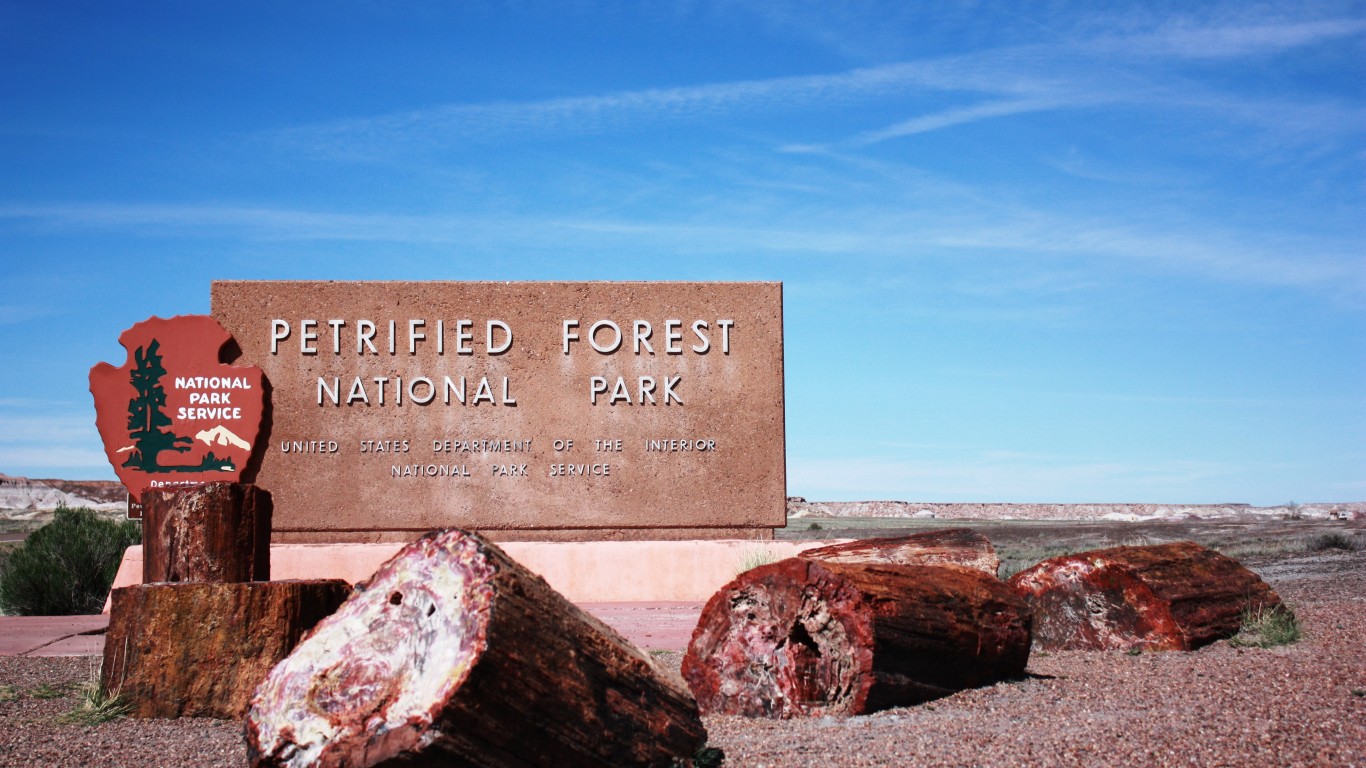
31. Petrified Forest
>Total land area: 221,390 acres
> Location: Arizona
> Privately owned land: 38,345 acres — or 17.3% of total park
> Recreation visits in 2020: 384,483 — or 0.6% of all NP visits
> 5-year change in visits: -51.5%
Petrified wood is the product of trees completely turning into stone. Geologists, paleontologists, and historians have visited the park many times to study the fossils that date back to prehistoric times.
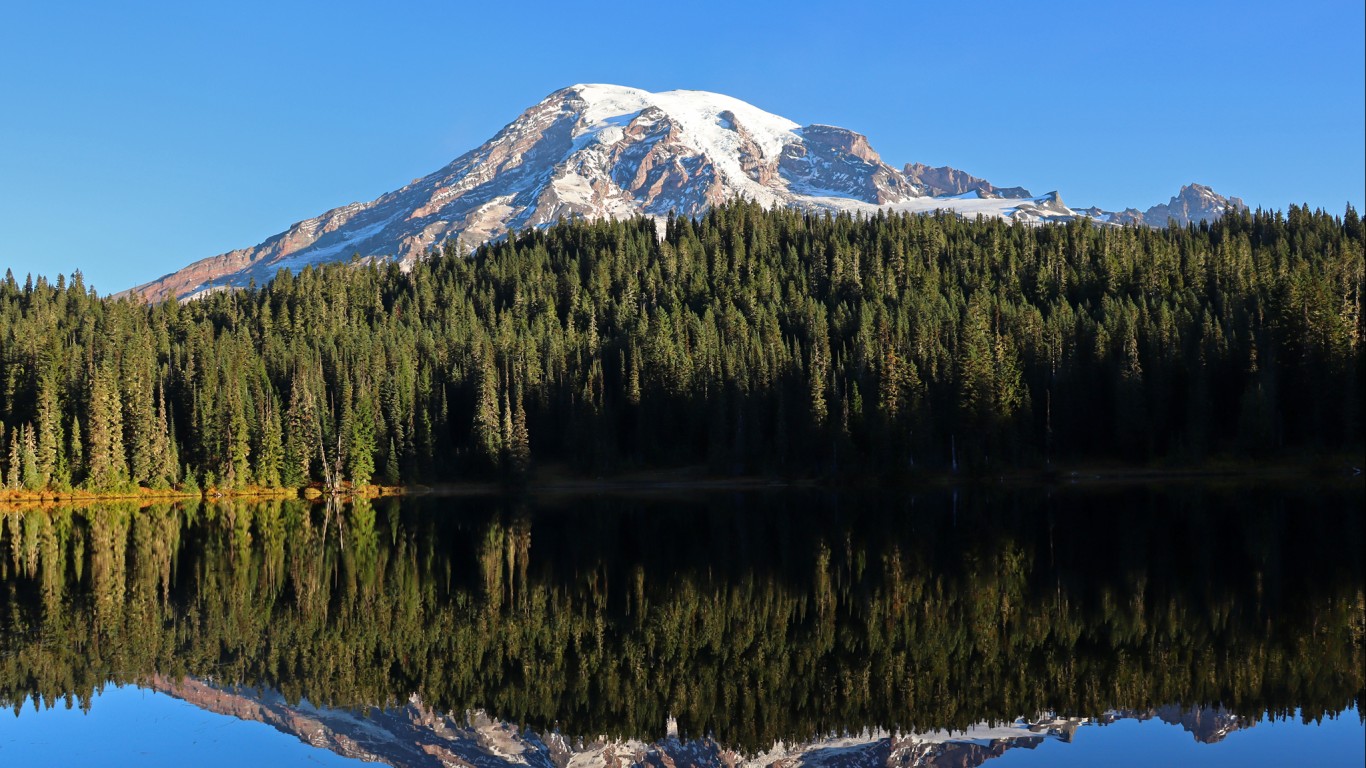
30. Mount Rainier
>Total land area: 236,382 acres
> Location: Washington
> Privately owned land: 26 acres — or 0.01% of total park
> Recreation visits in 2020: 1,160,754 — or 1.7% of all NP visits
> 5-year change in visits: -6.2%
From mid-October into November, Mount Rainier National Park is awash with autumn colors. Huckleberries, vine maples, and willows create rainbows of color, while tamaracks, one of the few coniferous trees that drop their leaves before winter, turn gold among the evergreens. Some of the best places to see the foliage are Chinook Pass, Reflection Lakes, and Grove of the Patriarchs.
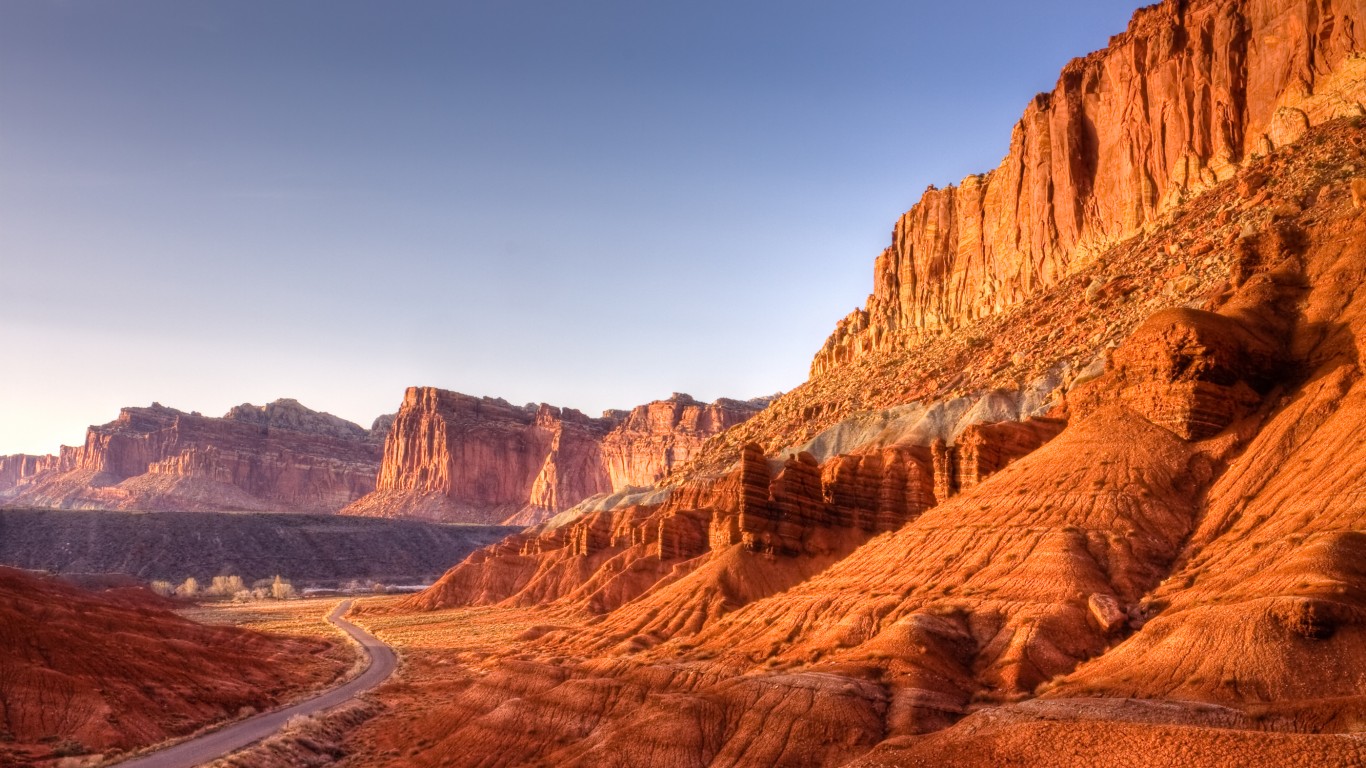
29. Capitol Reef
>Total land area: 241,905 acres
> Location: Utah
> Privately owned land: 0 acres
> Recreation visits in 2020: 981,038 — or 1.4% of all NP visits
> 5-year change in visits: 4.3%
Although much of Capitol Reef National Park consists of barren, towering geologic formations, the cottonwood groves along the Fremont River turn yellow against the red sandstone in early November. A unique perk of visiting Capitol Reef in autumn is the opportunity to pick your own apples at the historic Fruita Orchard within the park.
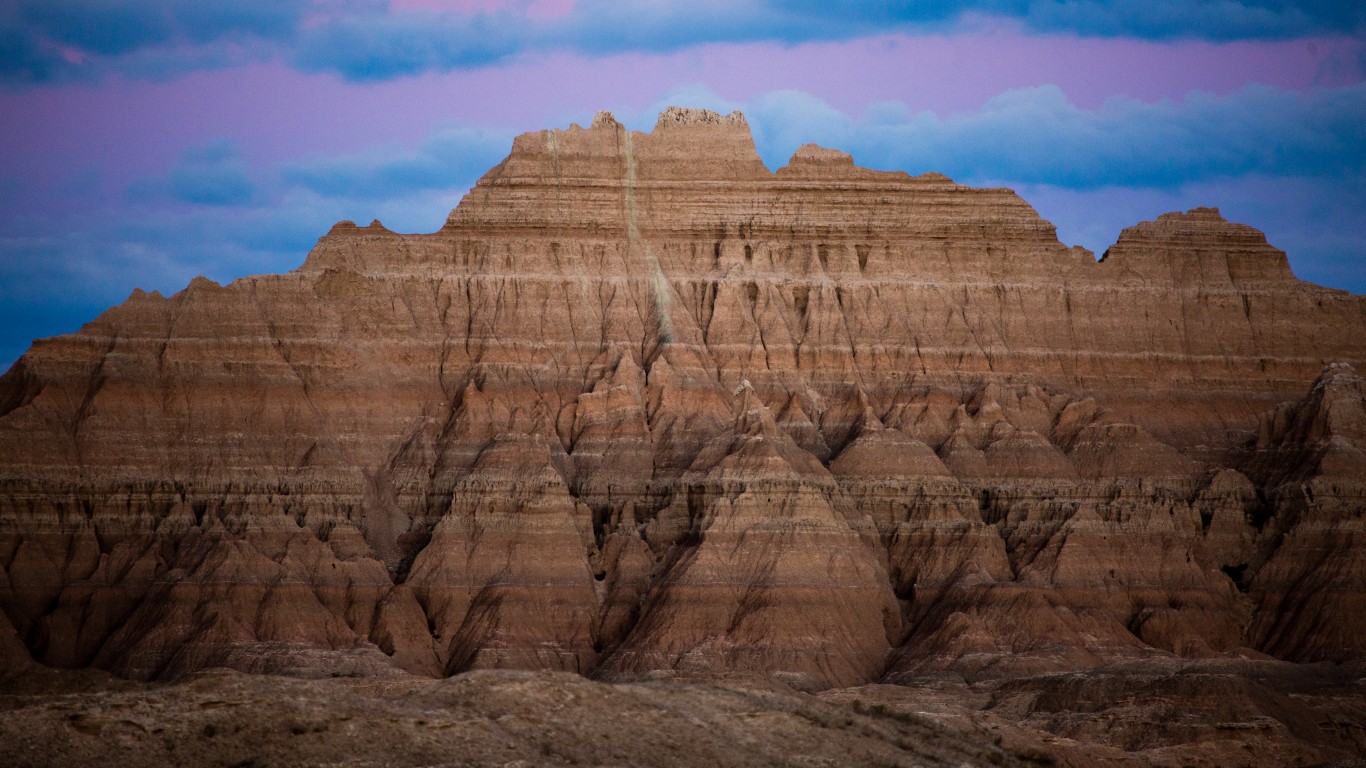
28. Badlands
>Total land area: 242,756 acres
> Location: South Dakota
> Privately owned land: 8,908 acres — or 3.7% of total park
> Recreation visits in 2020: 916,932 — or 1.3% of all NP visits
> 5-year change in visits: -7.3%
The badlands are a trademark of the West. A 40-mile road trip along the Badlands Loop State Scenic Byway is a good way to experience the area. You’ll witness ancient rock formations, cliffs, and colorful spires. The best viewpoints include Big Badlands Overlook, Pinnacles Overlook, and Yellow Mounds Overlook.
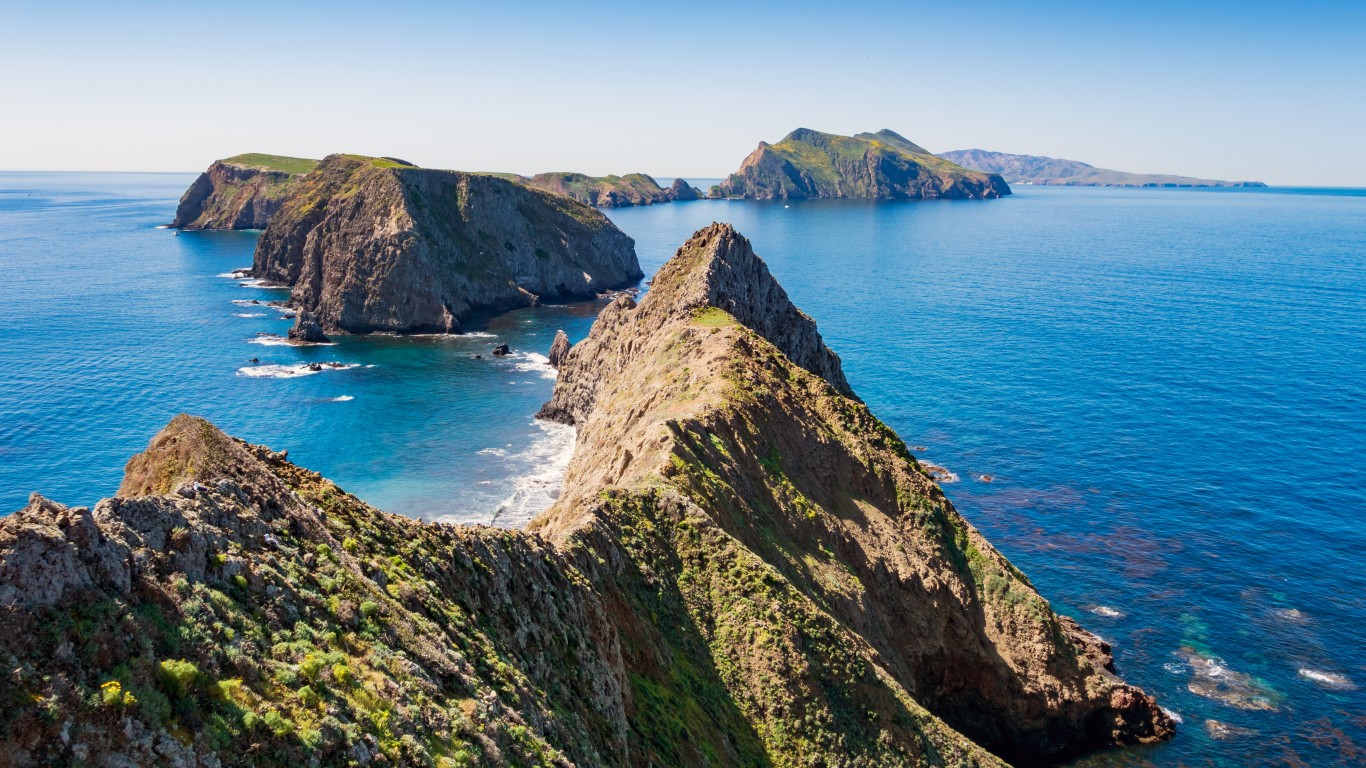
27. Channel Islands
>Total land area: 249,561 acres
> Location: California
> Privately owned land: 45,988 acres — or 18.4% of total park
> Recreation visits in 2020: 167,290 — or 0.2% of all NP visits
> 5-year change in visits: -48.5%
Channel Islands National Park includes five islands off southern California, not far from Los Angeles. One of the Channel Islands, San Miguel, is the only known place in the world where four different species of seals and sea lions breed.
[in-text-ad-2]
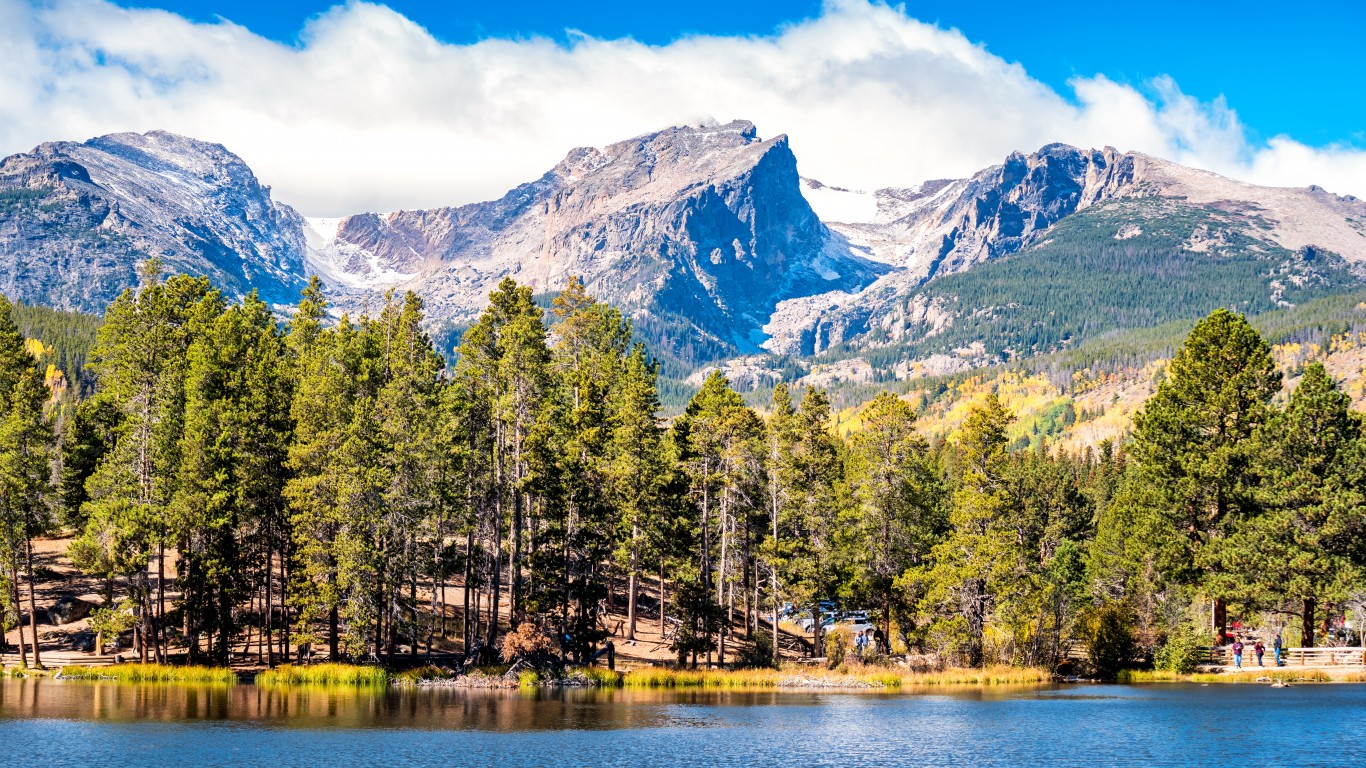
26. Rocky Mountain
>Total land area: 265,807 acres
> Location: Colorado
> Privately owned land: 193 acres — or 0.1% of total park
> Recreation visits in 2020: 3,305,199 — or 4.9% of all NP visits
> 5-year change in visits: -20.5%
Rocky Mountain National Park is full of hiking trails, 355 miles of them to be exact. If hiking isn’t for you, you can still witness the mountainous terrain through your car window. The roads wind along lowland meadows, rivers, all the way up to the subalpine forests. By the end of your journey, you will have ascended 12,000 feet and taken in a great deal of nature.
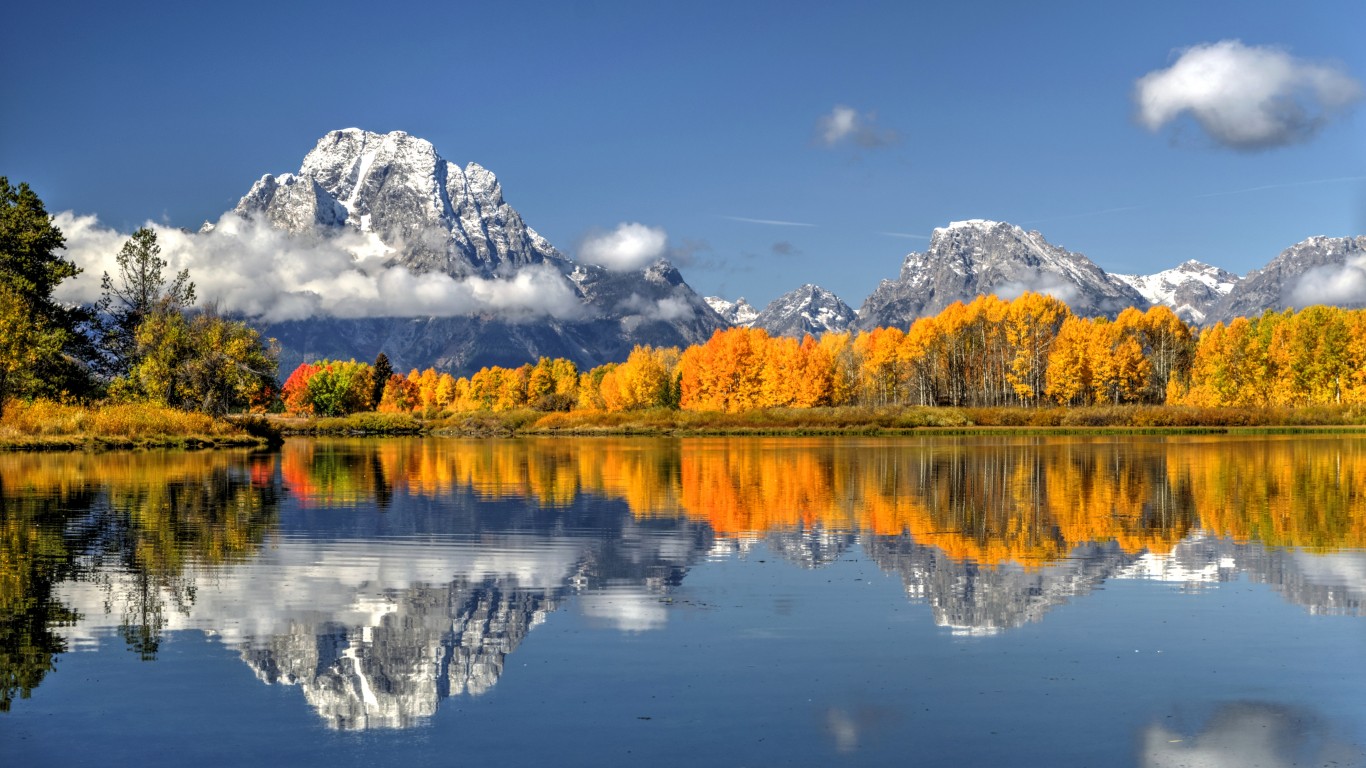
25. Grand Teton
>Total land area: 310,044 acres
> Location: Wyoming
> Privately owned land: 883 acres — or 0.3% of total park
> Recreation visits in 2020: 3,289,638 — or 4.8% of all NP visits
> 5-year change in visits: 4.4%
Grand Teton National Park has had human inhabitants for at least 11,000 years, when the last glaciers from the ice age melted. Philanthropist John D. Rockefeller, Jr. was a great fan of the park’s peaks, lakes and valleys, and a 24,000-acre parcel was dedicated to his memory.
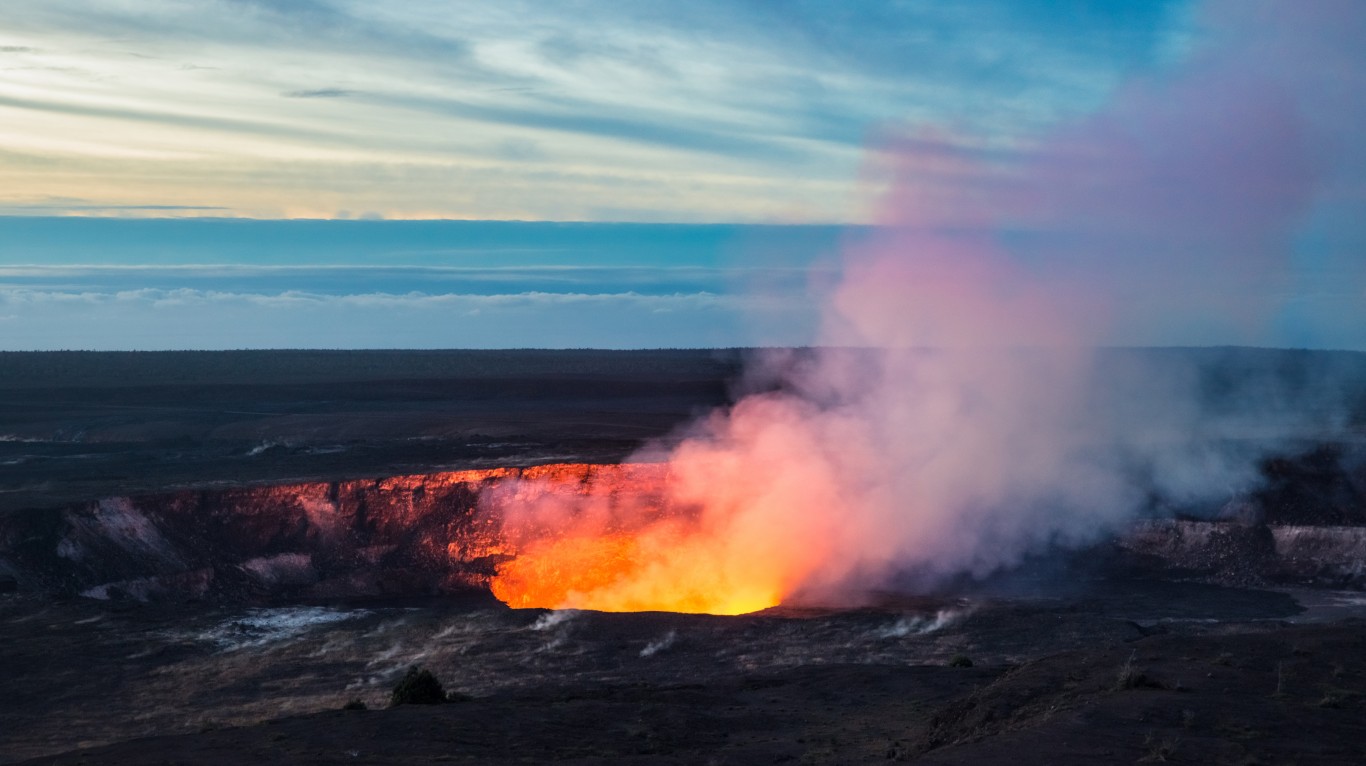
24. Hawaii Volcanoes
>Total land area: 325,605 acres
> Location: Hawaii
> Privately owned land: 0 acres
> Recreation visits in 2020: 589,775 — or 0.9% of all NP visits
> 5-year change in visits: -67.8%
The mission of Hawaii Volcanoes National Park is to protect, conserve, study volcanic landscapes, and to permit safe public access to active volcanoes, diverse geographic settings, and wilderness. The park includes two of the world’s most active volcanoes, Kīlauea and Mauna Loa.
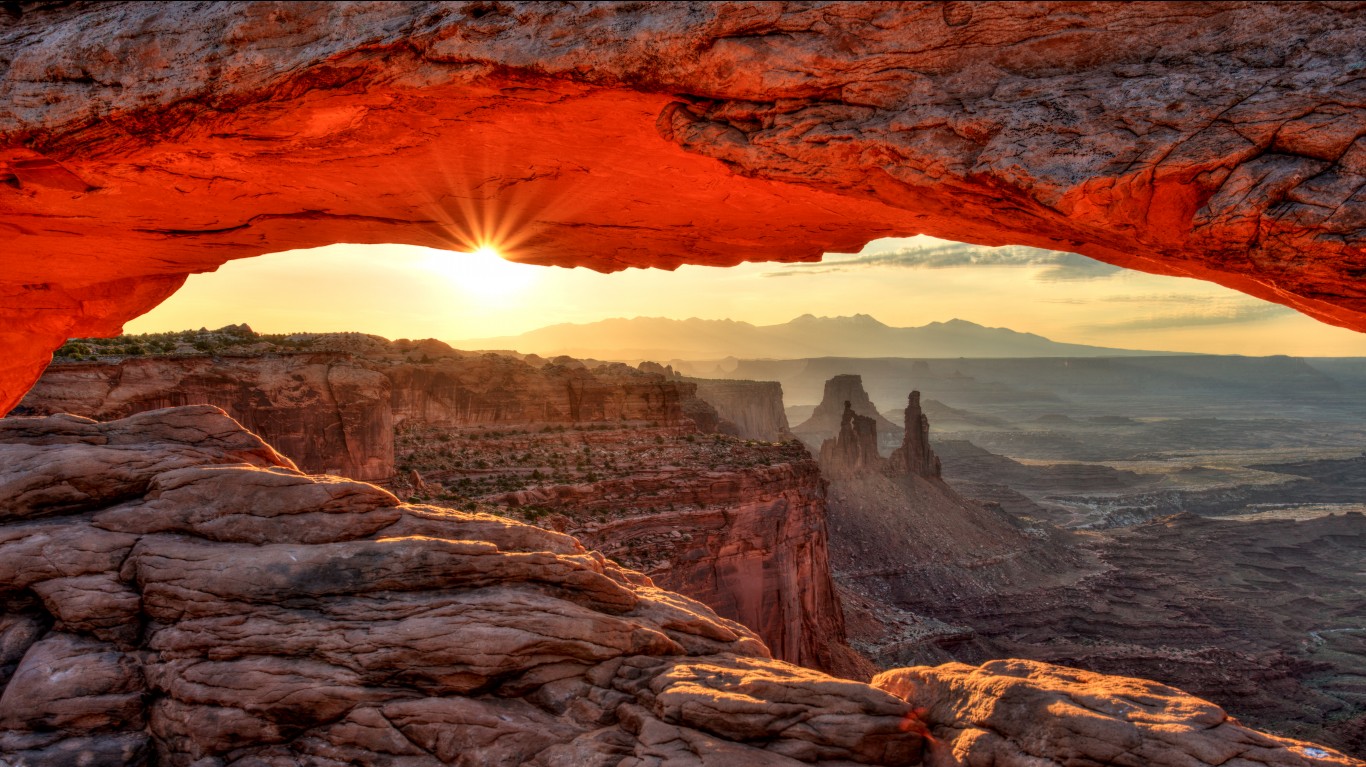
23. Canyonlands
>Total land area: 337,598 acres
> Location: Utah
> Privately owned land: 0 acres
> Recreation visits in 2020: 493,914 — or 0.7% of all NP visits
> 5-year change in visits: -22.2%
Canyonlands National Park offers a plethora of activities, including biking, boating, horseback riding and, when the sun goes down, stargazing. People have lived and roamed through this area for more than 10,000 years. A newer addition, Horseshoe Canyon, was introduced to the park in 1971 and is known to have some of the most impressive rock art in all of North America.
[in-text-ad]
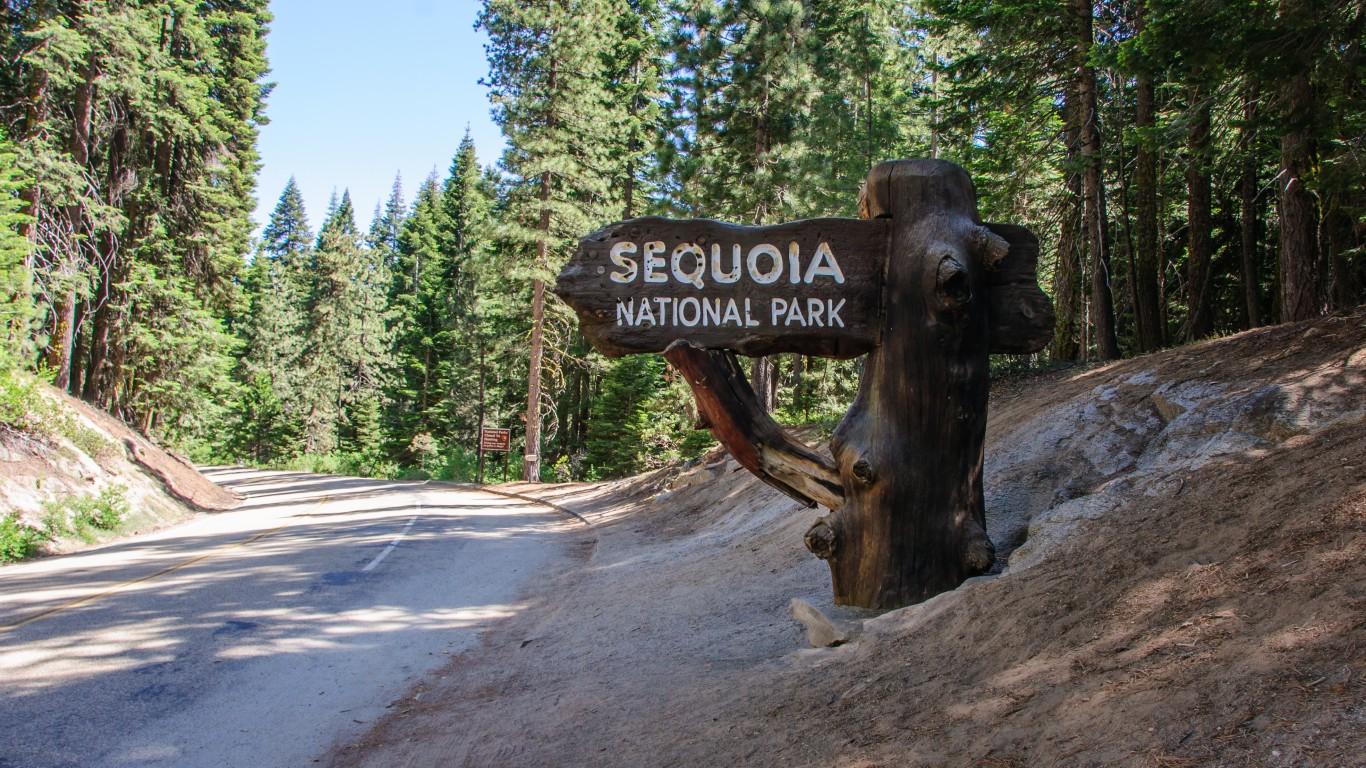
22. Sequoia
>Total land area: 404,063 acres
> Location: California
> Privately owned land: 154 acres — or 0.04% of total park
> Recreation visits in 2020: 796,086 — or 1.2% of all NP visits
> 5-year change in visits: -27.5%
This park has grown to great heights. Besides being the home of the 2,200-year-old General Sherman Tree, the tallest tree in the world at 275 feet, Sequoia National Park also shares a border with Mount Whitney — the tallest mountain in the continental U.S. Viewing these wonders was made easier for visitors e because of Captain Charles Young and his Buffalo soldiers, who built roads and trails in the early years of this national park.

21. Kings Canyon
>Total land area: 461,901 acres
> Location: California
> Privately owned land: 55 acres — or 0.01% of total park
> Recreation visits in 2020: 415,077 — or 0.6% of all NP visits
> 5-year change in visits: -11.3%
Kings Canyon National Park, which adjoins Sequoia National Park, gained fame when conservationist John Muir visited the canyon in the late 19th century. Kings Canyon was formed by glacier activity.
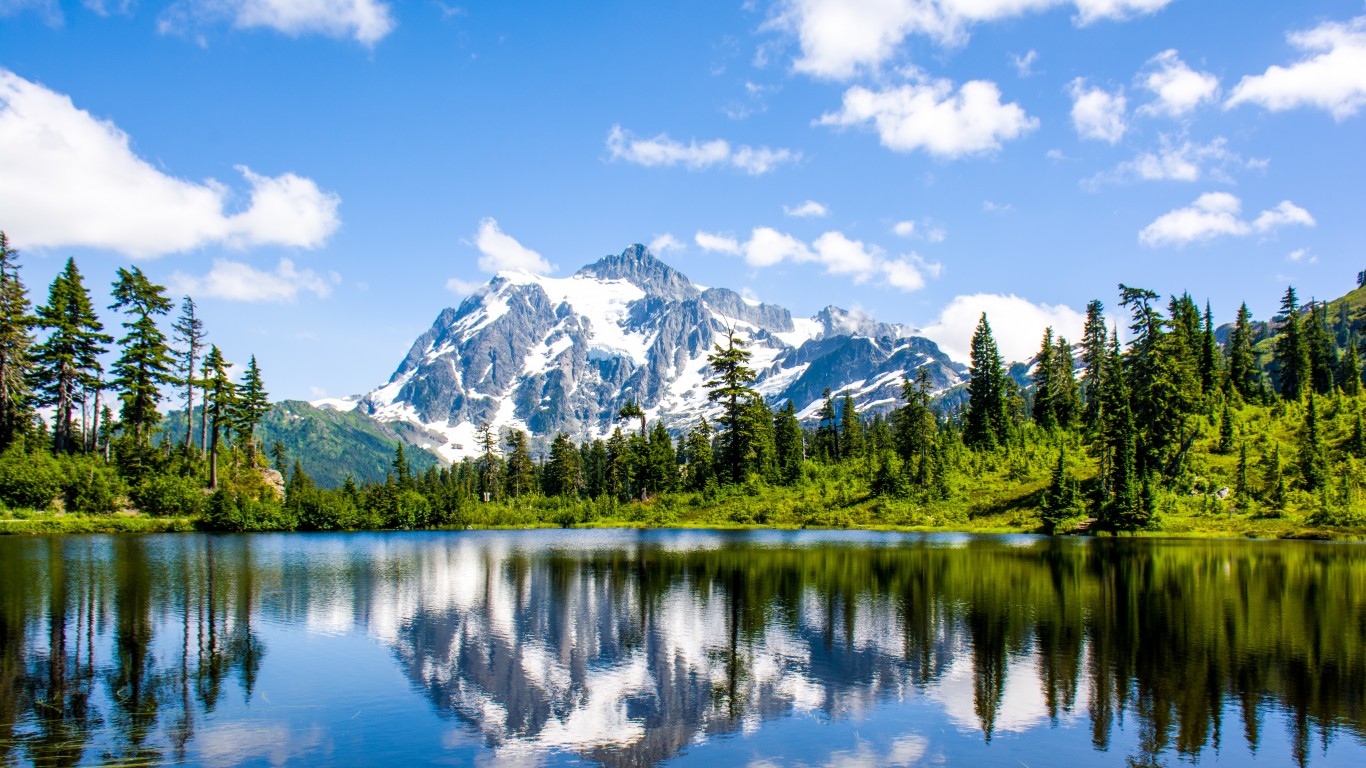
20. North Cascades
>Total land area: 504,781 acres
> Location: Washington
> Privately owned land: 127 acres — or 0.03% of total park
> Recreation visits in 2020: 30,885 — or 0.05% of all NP visits
> 5-year change in visits: 49.4%
North Cascades National Park is rich in history. Currently, 260 prehistoric sites have been identified, some of them dating back more than 8,500 years. The park and prehistoric sites are free to visitors. As you wander through the park, you may notice the red pictographs on the cliffs around Lake Chelan left by the Chelan people many years ago.
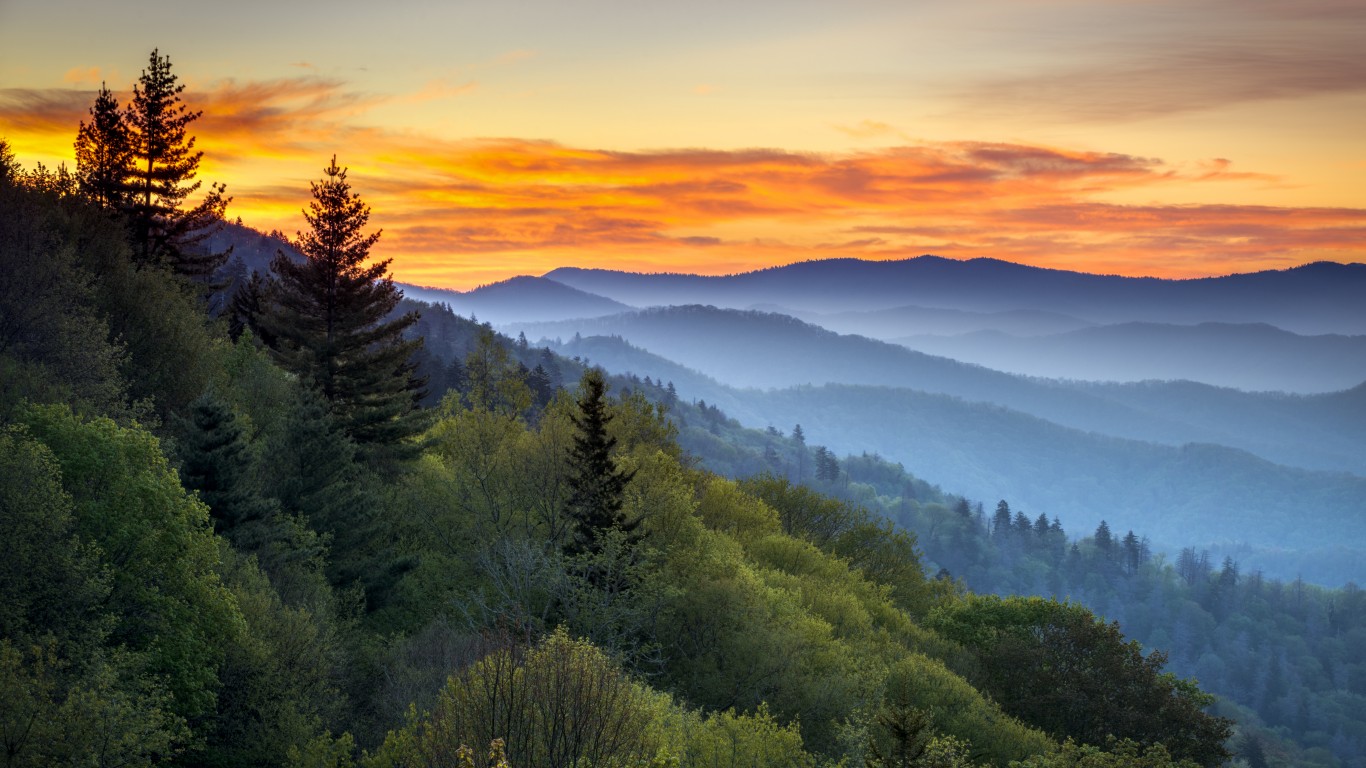
19. Great Smoky Mountains
>Total land area: 522,427 acres
> Location: North Carolina, Tennessee
> Privately owned land: 350 acres — or 0.1% of total park
> Recreation visits in 2020: 12,095,720 — or 17.8% of all NP visits
> 5-year change in visits: 12.9%
America’s most visited national park year after year, more than 12 million people came to explore the Great Smoky Mountains in 2020. It’s not hard to see why, with more than 100 prominent cascades and waterfalls flowing throughout the forests and mountains.
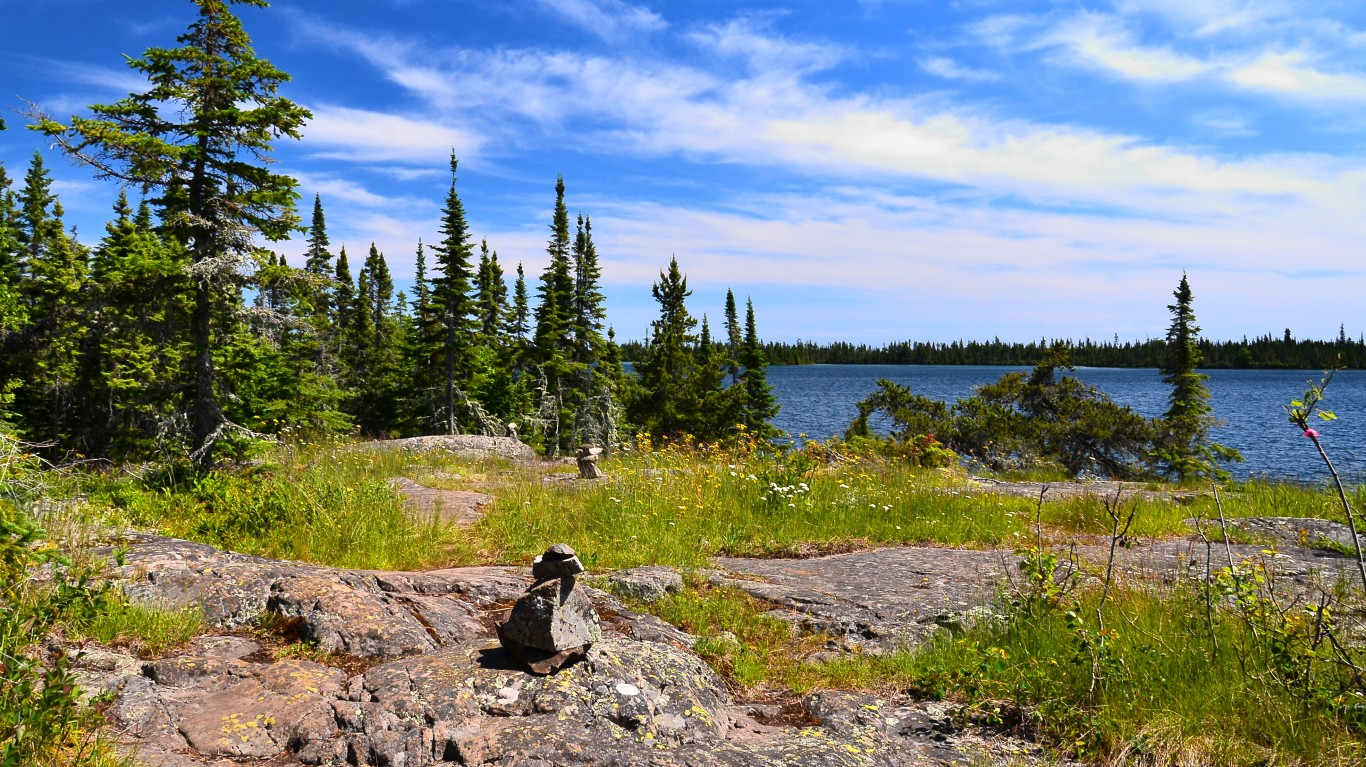
18. Isle Royale
>Total land area: 571,790 acres
> Location: Michigan
> Privately owned land: 0 acres
> Recreation visits in 2020: 6,493 — or 0.01% of all NP visits
> 5-year change in visits: -65.2%
An interactive mapping project at Isle Royale National Park, located on an island in Lake Superior, allows visitors to zoom into various historic features around the island. Visitors can explore lighthouses, fisheries, mining sites and Native American heritage.
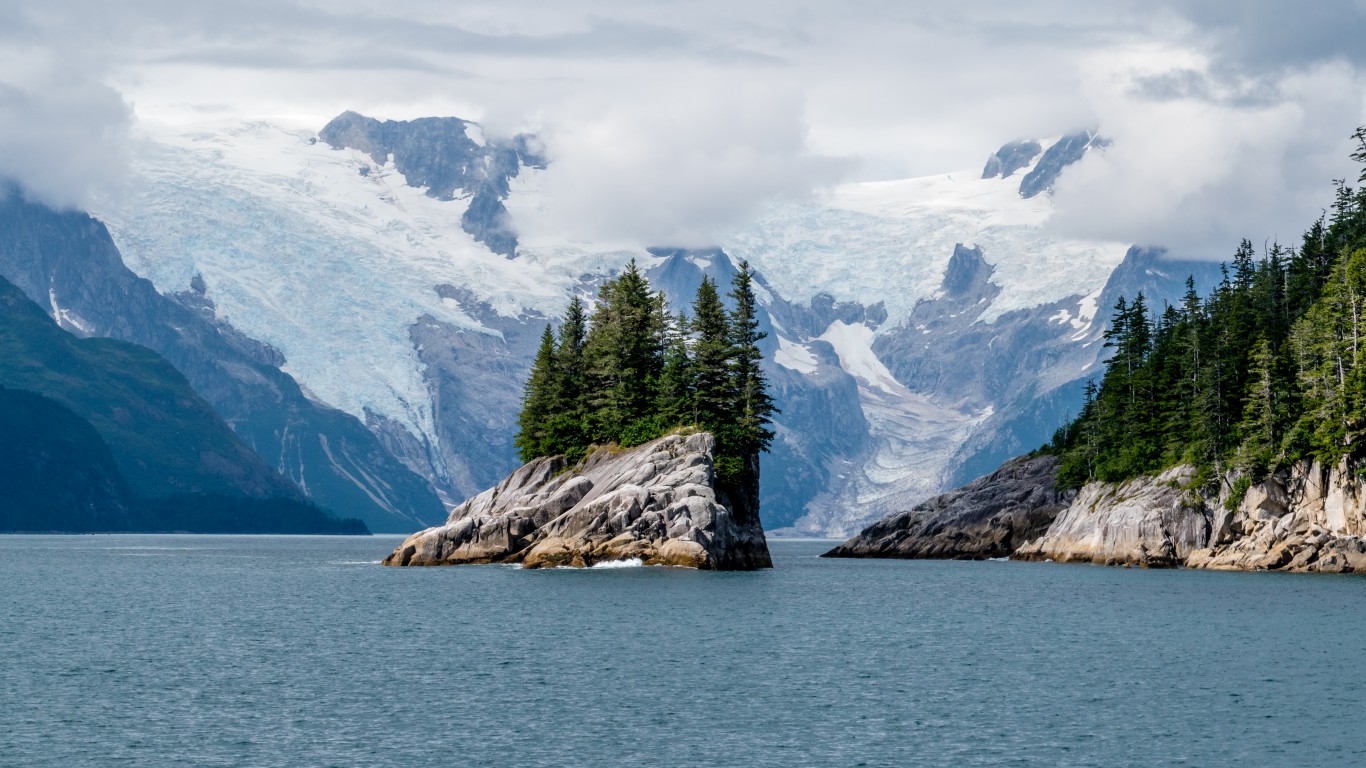
17. Kenai Fjords
>Total land area: 669,650 acres
> Location: Alaska
> Privately owned land: 47,218 acres — or 7.1% of total park
> Recreation visits in 2020: 115,882 — or 0.2% of all NP visits
> 5-year change in visits: -60.9%
This Alaska park gives tourists an opportunity to see something they can’t in warmer parts of the U.S. — glaciers. The Exit Glacier area shows how glaciers shape the landscape. Visitors can even hear the creaks and groans of a glacier sculpting the terrain.
[in-text-ad-2]
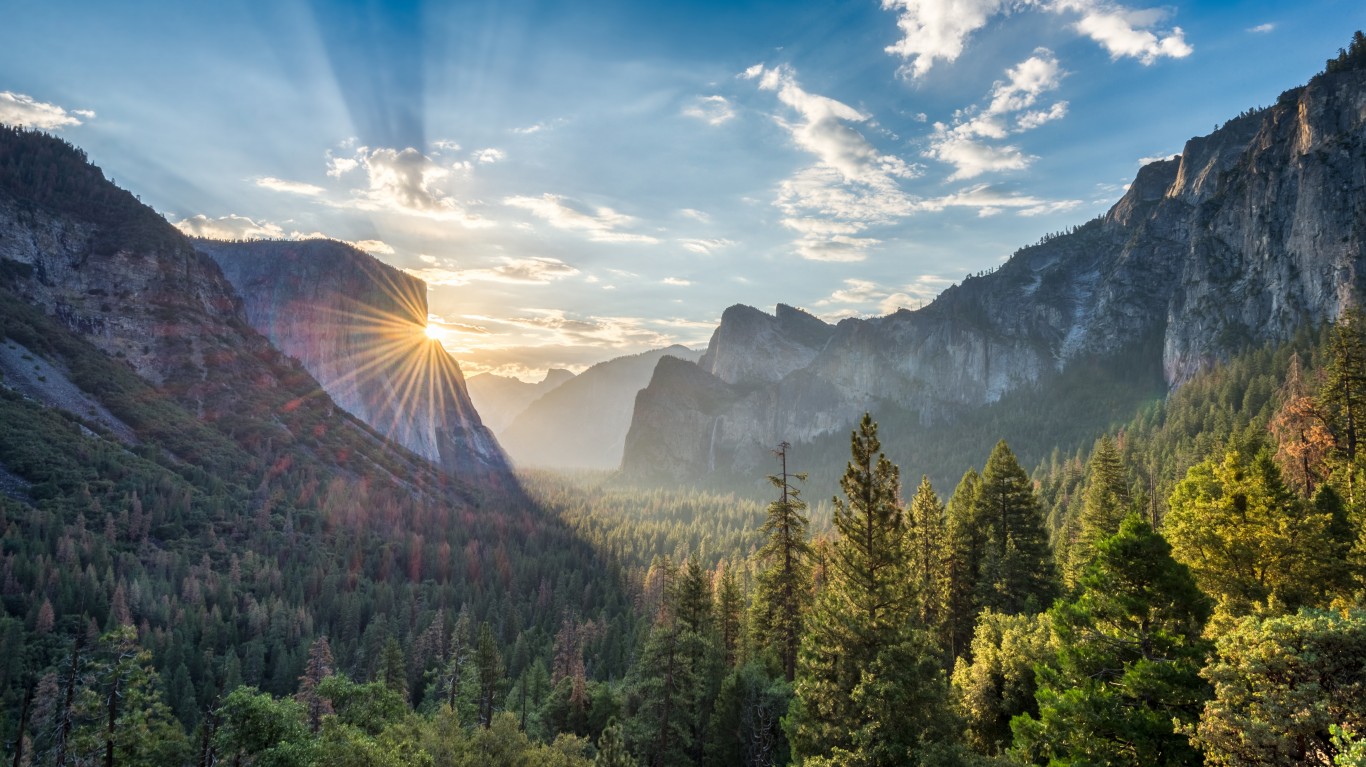
16. Yosemite
>Total land area: 761,748 acres
> Location: California
> Privately owned land: 225 acres — or 0.03% of total park
> Recreation visits in 2020: 2,268,313 — or 3.3% of all NP visits
> 5-year change in visits: -45.3%
What makes Yosemite National Park unique is not that it is covered by wilderness for over 95% of its territory, but that its landscape is dominated by granite. A popular destination for rock climbing, hiking and camping, adventure seekers may not know that “Yosemite” is a Miwok word for “those who kill” — a description of the feared tribes near the area.
15. Joshua Tree
>Total land area: 795,156 acres
> Location: California
> Privately owned land: 10,674 acres — or 1.3% of total park
> Recreation visits in 2020: 2,399,542 — or 3.5% of all NP visits
> 5-year change in visits: 18.5%
Joshua Tree National Park protects more than 700 archeological sites, 88 historic structures, 19 cultural landscapes, and houses 230,300 items in its museum collection. Joshua Tree owes its existence to the efforts of Minerva Hoyt, a Pasadena resident who fought to preserve the natural beauty of the region that was being ravaged by cacti poachers.
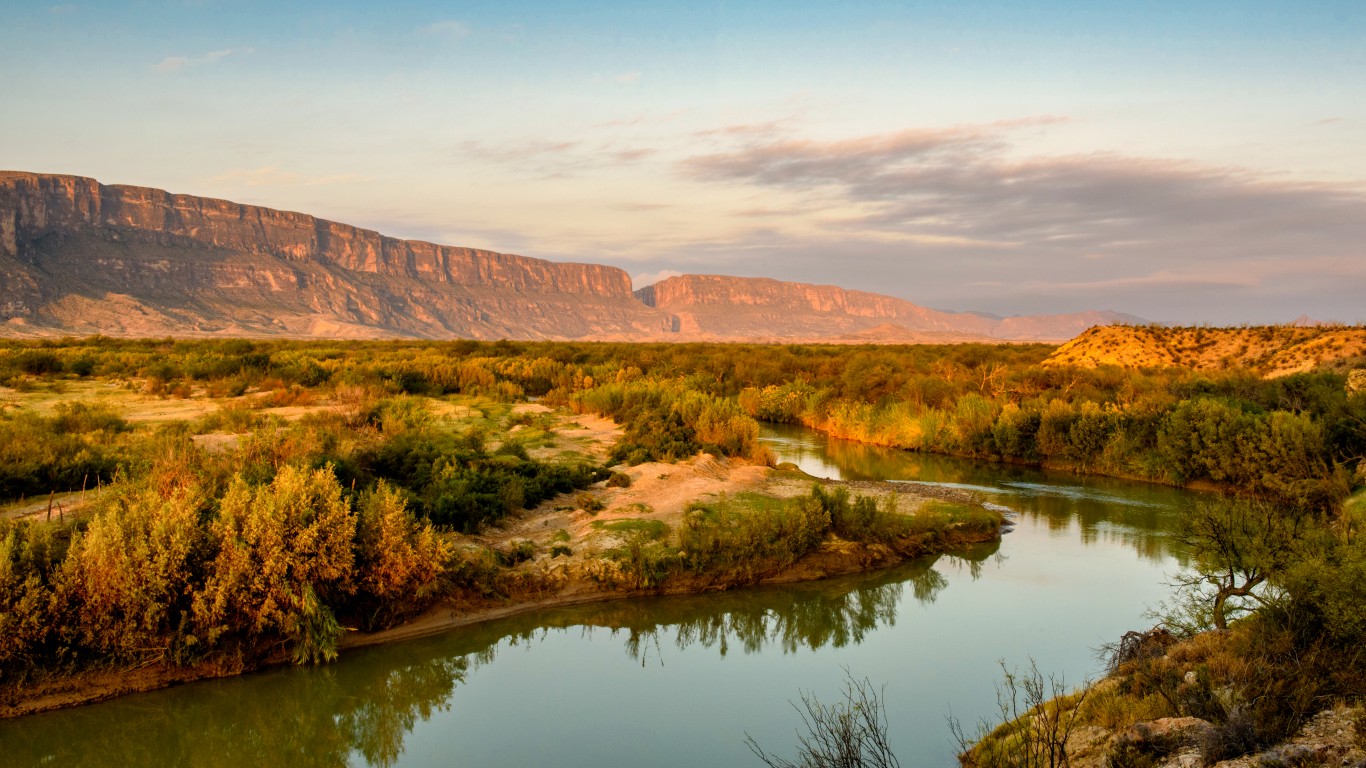
14. Big Bend
>Total land area: 801,163 acres
> Location: Texas
> Privately owned land: 23,283 acres — or 2.9% of total park
> Recreation visits in 2020: 393,907 — or 0.6% of all NP visits
> 5-year change in visits: 3.2%
The region where Big Bend National Park is may have been home to indigenous peoples for centuries, however, the area remained obscure to American settlers until the 1890s. Robert T. Hill led a six-man expedition to explore the Rio Grande, which runs through the Big Bend Region. Two years after his month-long trek, he published a book about the area, which may have helped the region become more popular.
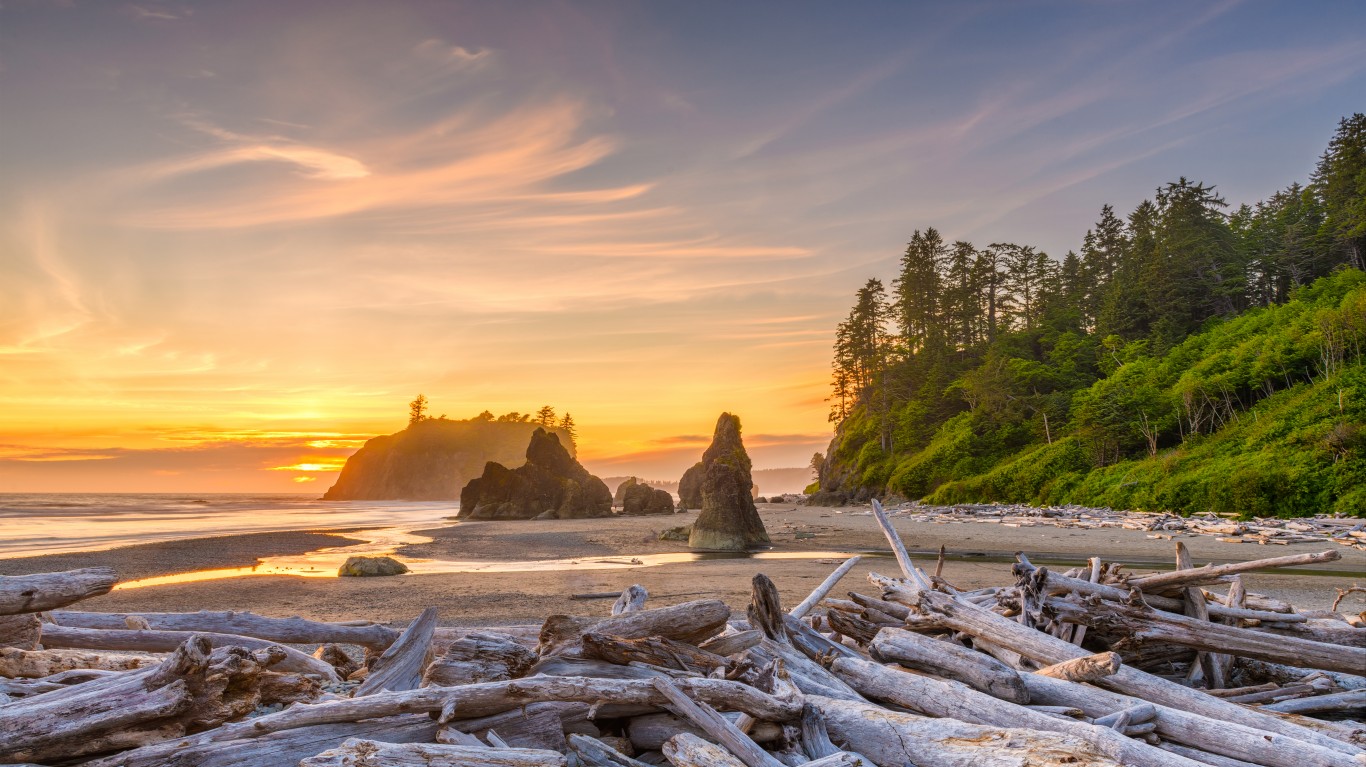
13. Olympic
>Total land area: 922,649 acres
> Location: Washington
> Privately owned land: 326 acres — or 0.04% of total park
> Recreation visits in 2020: 2,499,177 — or 3.7% of all NP visits
> 5-year change in visits: -23.4%
The Olympic National Park is divided into four separate ecosystems: the Pacific coastline, alpine areas, a rainforest on the west, and forests on the east side. Because of the various regions available to visit, this national park became a UNESCO world heritage site in 1981.
[in-text-ad]
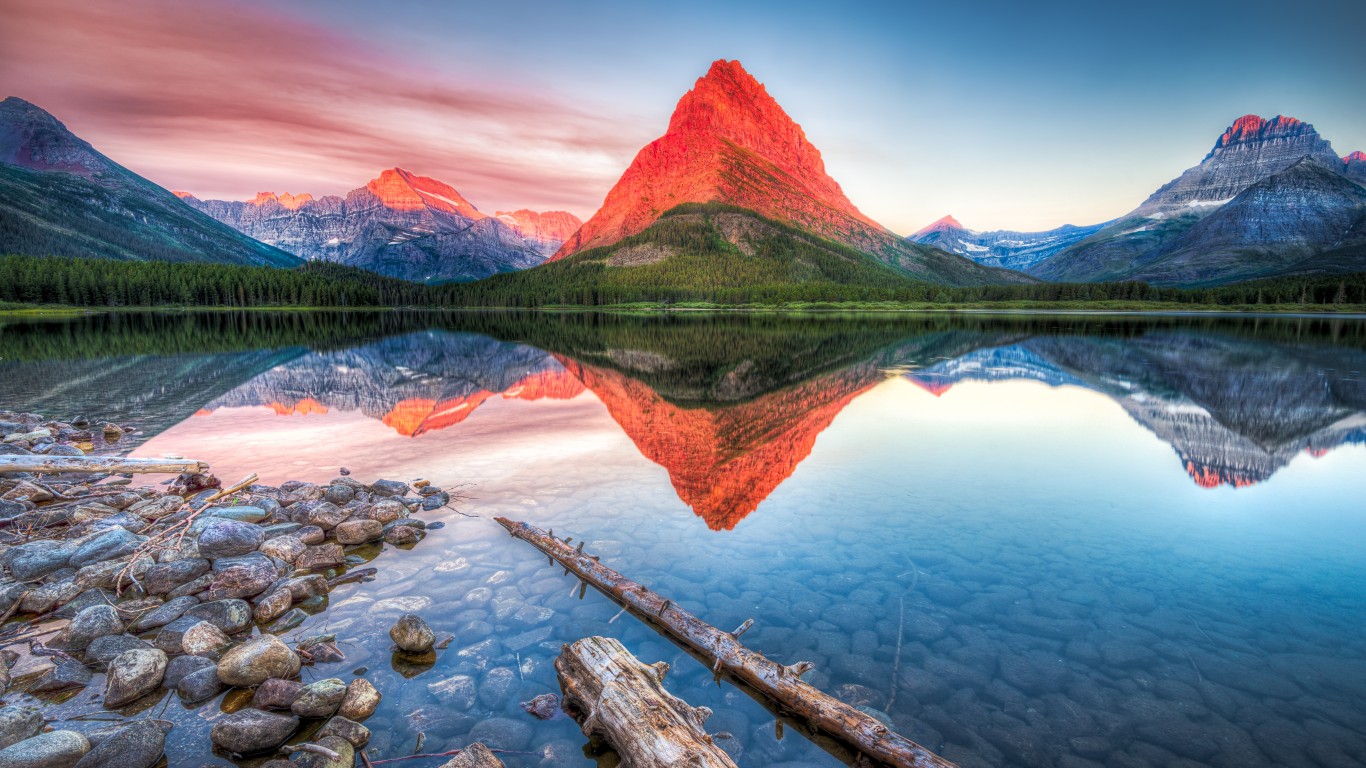
12. Glacier
>Total land area: 1,013,126 acres
> Location: Montana
> Privately owned land: 226 acres — or 0.02% of total park
> Recreation visits in 2020: 1,698,864 — or 2.5% of all NP visits
> 5-year change in visits: -28.2%
Glacier National Park, also called the “Crown of the Continent,” is the headwaters for streams that flow into the Pacific Ocean, the Gulf of Mexico, and Hudson Bay. There are 26 glaciers in the park, all of which are shrinking. In 1932, Waterton Lakes National Park in Alberta, Canada, combined with Glacier National Park to form the world’s first International Peace Park, which is situated on the border of the two countries and is a UNESCO site.
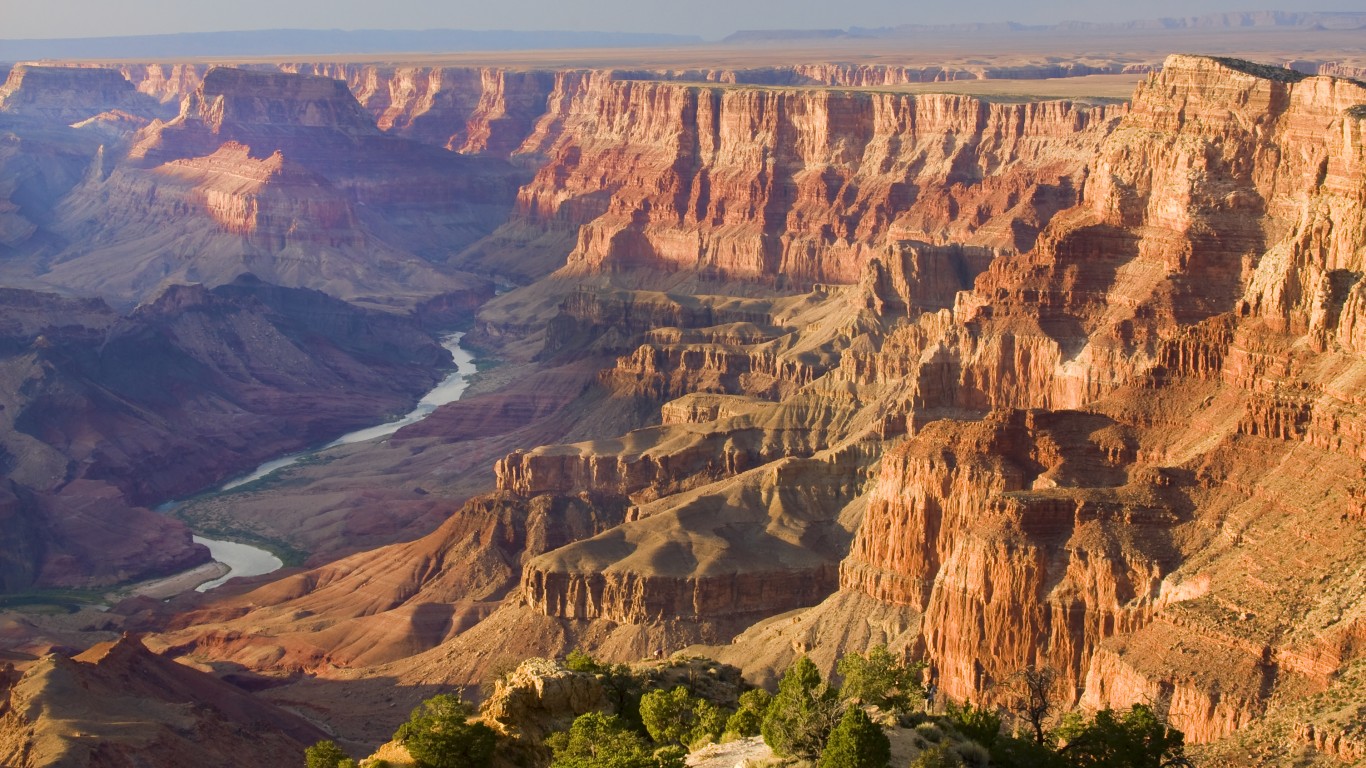
11. Grand Canyon
>Total land area: 1,201,647 acres
> Location: Arizona
> Privately owned land: 9,136 acres — or 0.8% of total park
> Recreation visits in 2020: 2,897,098 — or 4.3% of all NP visits
> 5-year change in visits: -47.5%
Of all the national parks in the country, the Grand Canyon may be the most famous. The Grand Canyon was first granted federal protection in 1893, but was not designated a national park until 1919. In that year 44,173 people visited the park. Nearly 5 million people travel to the Grand Canyon each year.
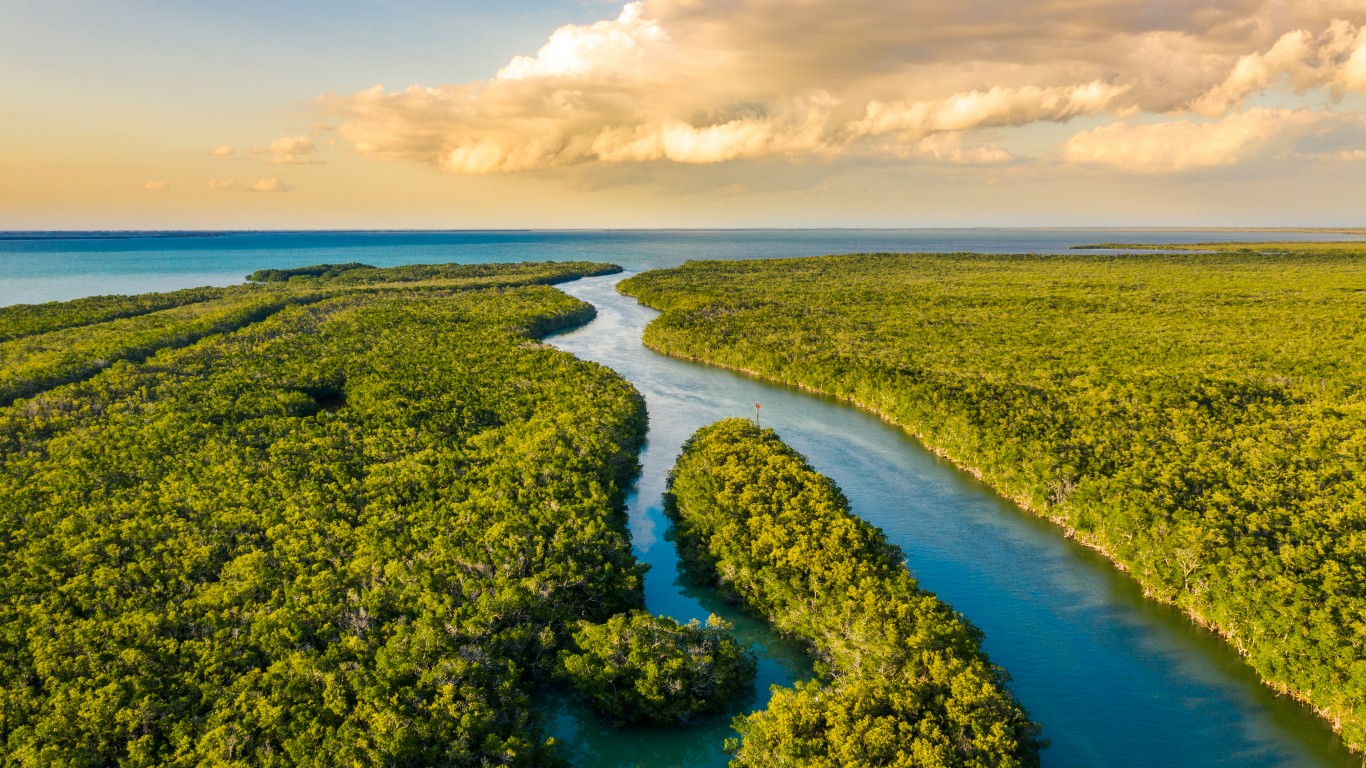
10. Everglades
>Total land area: 1,400,539 acres
> Location: Florida
> Privately owned land: 286 acres — or 0.02% of total park
> Recreation visits in 2020: 702,319 — or 1.0% of all NP visits
> 5-year change in visits: -34.8%
The Everglades National Park is the largest subtropical wilderness in the U.S. The park is home to rare and endangered species, such as the manatee, American crocodile, and the Florida panther. In recent years, the Burmese python, one of the largest snake species on earth, has invaded the Everglades and disrupted its ecosystem by preying on birds and smaller animals.
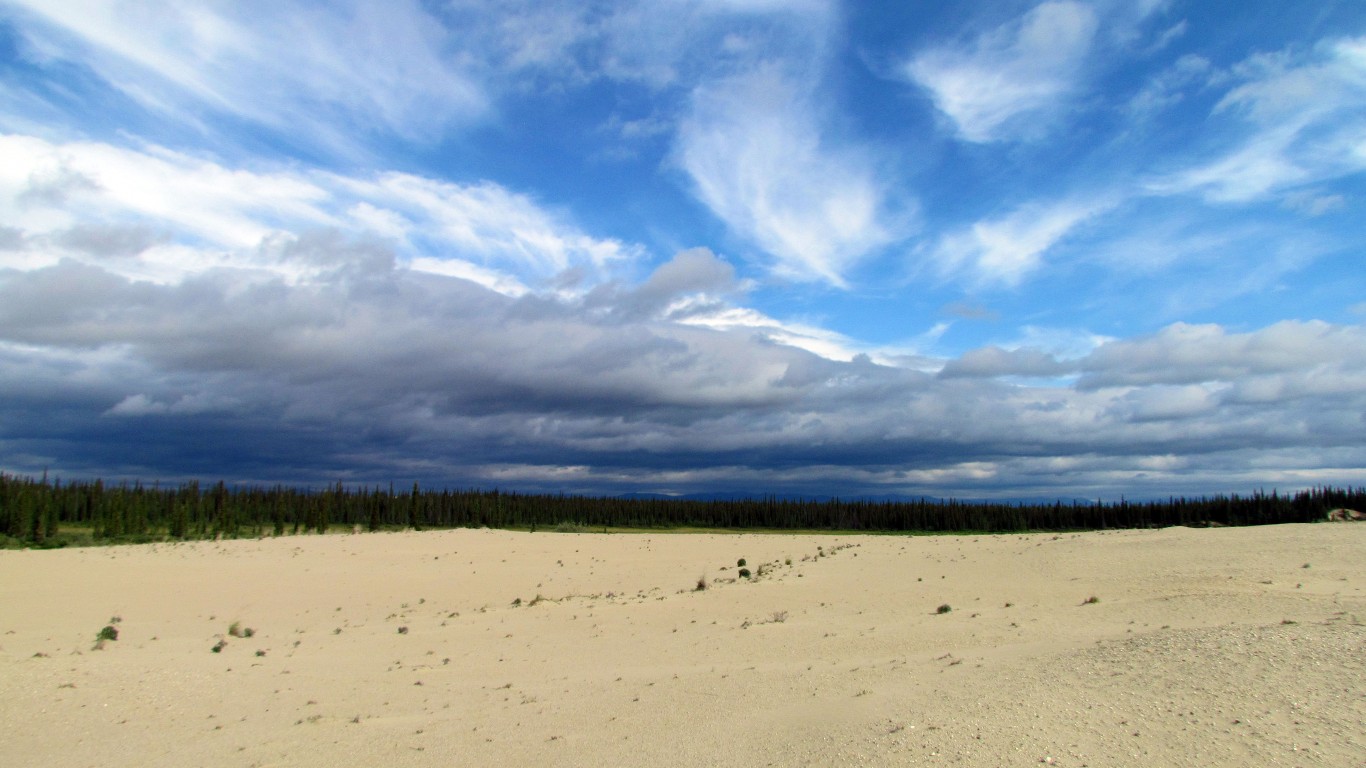
9. Kobuk Valley
>Total land area: 1,750,716 acres
> Location: Alaska
> Privately owned land: 35,332 acres — or 2.0% of total park
> Recreation visits in 2020: 11,185 — or 0.02% of all NP visits
> 5-year change in visits: N/A
Tourists looking for sand dunes don’t need to leave the U.S. In fact, the Great Kobuk Sand Dunes are one of the biggest attractions of Kobuk Valley National Park. Hikers can also observe the caribou during their spring and fall migration.
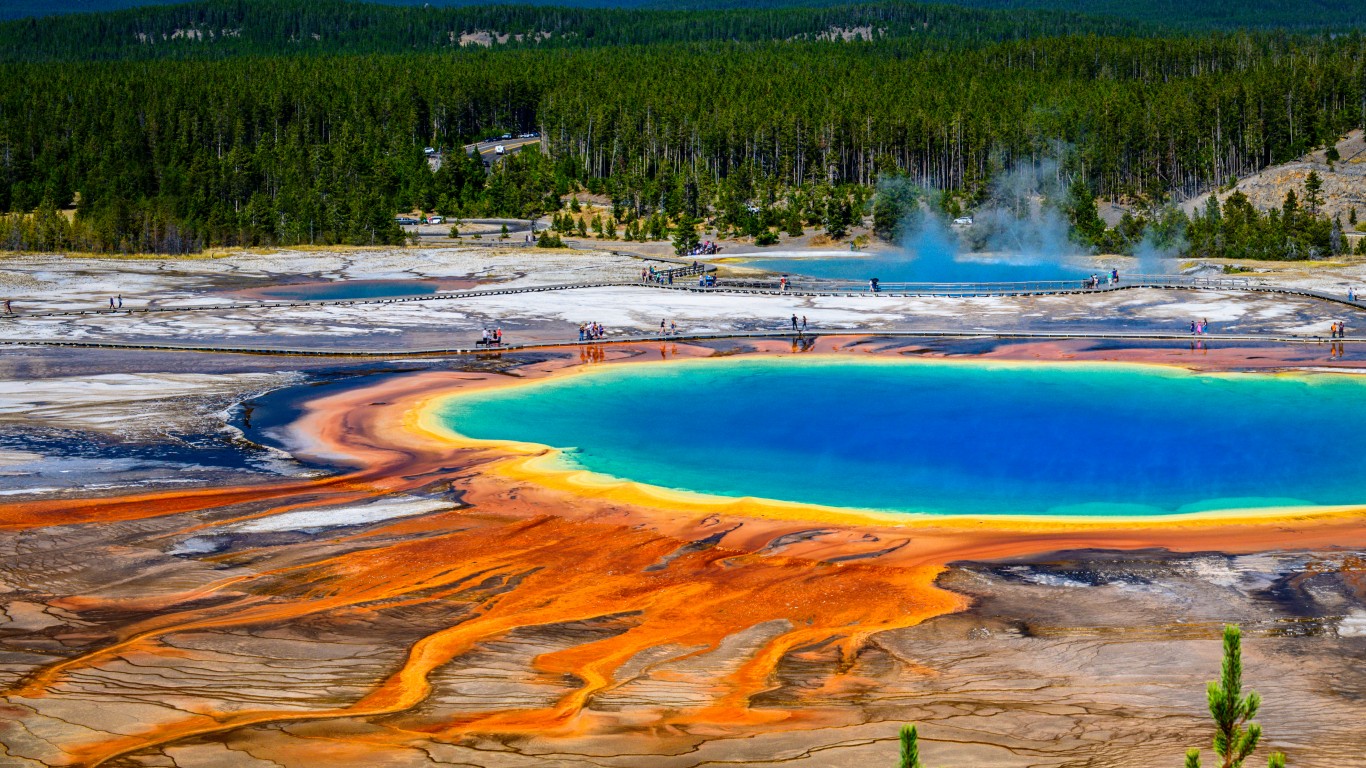
8. Yellowstone
>Total land area: 2,219,791 acres
> Location: Idaho, Montana, Wyoming
> Privately owned land: 2 acres — or 0.0001% of total park
> Recreation visits in 2020: 3,806,306 — or 5.6% of all NP visits
> 5-year change in visits: -7.1%
As legend has it, a group of explorers passed through the region in 1870 and claimed this “land of fire and ice and wild animals needed to be preserved.” It was at this point that the idea of a national park was born. President Ulysses S. Grant signed the Yellowstone National Park Protection Act into 1872, making Yellowstone the world’s first national park. Yellowstone is the home of the famous geyser Old Faithful.

7. Lake Clark
>Total land area: 2,619,816 acres
> Location: Alaska
> Privately owned land: 100,950 acres — or 3.9% of total park
> Recreation visits in 2020: 4,948 — or 0.007% of all NP visits
> 5-year change in visits: -72.2%
Lake Clark National Park is one of seven national parks in Alaska to rank among the 10 largest in America. It covers over 2.6 million acres of pristine wilderness surrounding the lake from which it gets its name. The most visited place in the park is actually a different lake — Crescent Lake. A popular fishing destination, Crescent Lake has no developed trails or roads, so visitors can only access by traveling in a plane that can land in the water.
[in-text-ad-2]
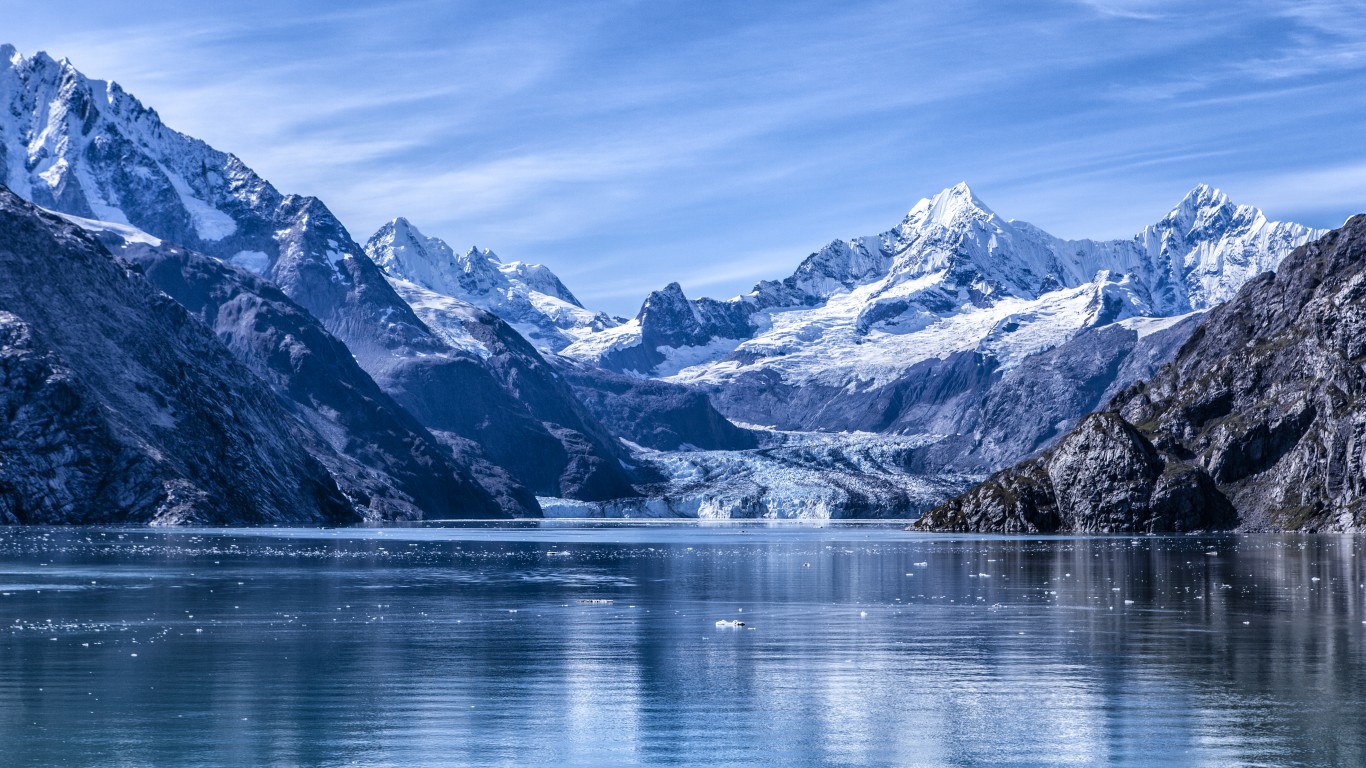
6. Glacier Bay
>Total land area: 3,223,383 acres
> Location: Alaska
> Privately owned land: 949 acres — or 0.03% of total park
> Recreation visits in 2020: 5,748 — or 0.008% of all NP visits
> 5-year change in visits: -99.0%
Glacier Bay National Park and Preserve covers more than 3.2 million acres of mountains, glaciers, temperate rainforest, coastlines and fjords. The park is part of a 25-million acre World Heritage Site that is visited by thousands of tourists on cruise ships and Glacier Bay is one of the world’s largest international protected areas.
5. Death Valley
>Total land area: 3,408,396 acres
> Location: California, Nevada
> Privately owned land: 8,953 acres — or 0.3% of total park
> Recreation visits in 2020: 820,023 — or 1.2% of all NP visits
> 5-year change in visits: -29.0%
The largest national park in the continental U.S. is also one of the lowest points on earth. Despite its gloomy name, given by pioneers who were lost in the valley during the California Gold Rush, an indigenous population has lived in what is now the park for around 7,000 years.
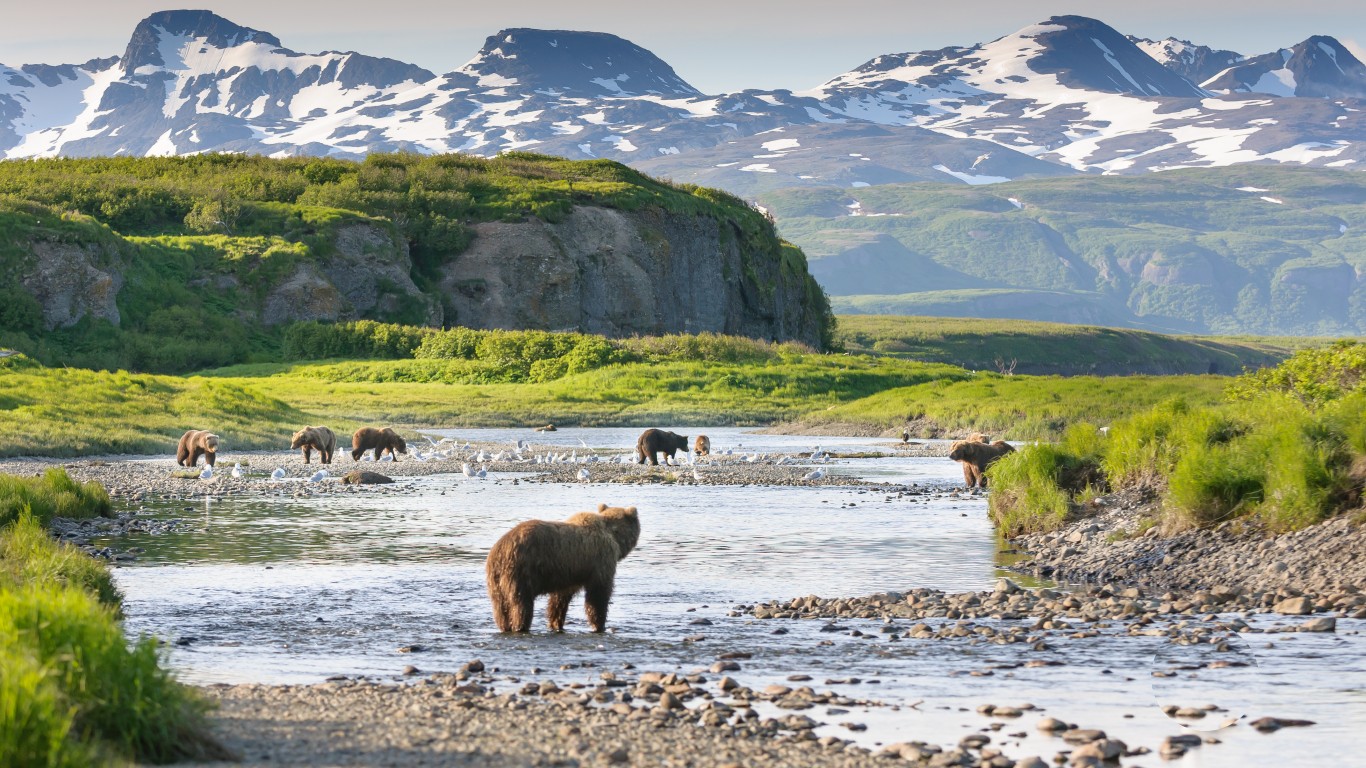
4. Katmai
>Total land area: 3,674,529 acres
> Location: Alaska
> Privately owned land: 12,793 acres — or 0.3% of total park
> Recreation visits in 2020: 51,511 — or 0.1% of all NP visits
> 5-year change in visits: 36.2%
Katmai National Park encompasses 3.6 million acres surrounding Novarupta, a volcano in southern Alaska. The area is a crucial habitat for salmon and the brown bears that eat them. The park has become a viral sensation for its annual “Fat Bear Week,” in which online voters decide which brown bear did the best job chunking up ahead of their hibernation. A beefy bear by the name of Otis took home his fourth Fat Bear Week win in 2021.
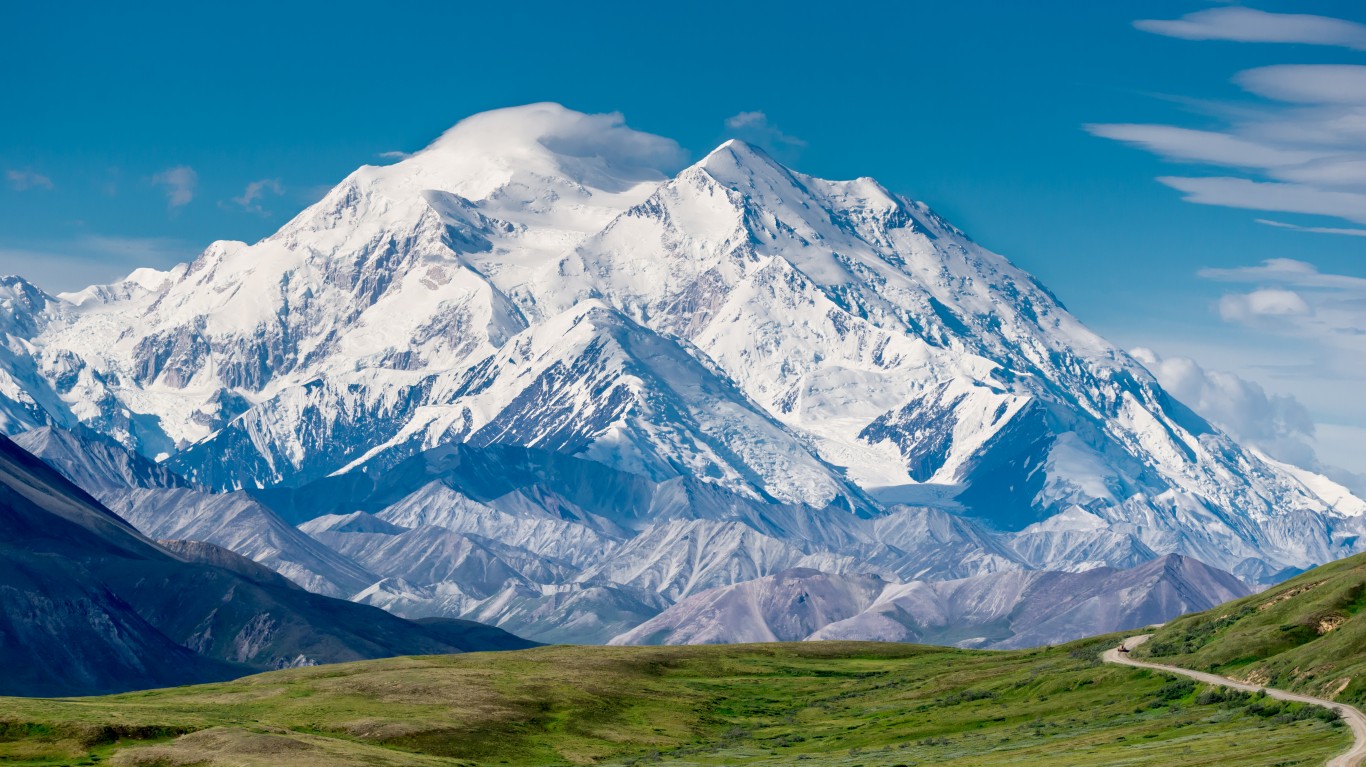
3. Denali
>Total land area: 4,740,911 acres
> Location: Alaska
> Privately owned land: 2,598 acres — or 0.1% of total park
> Recreation visits in 2020: 54,850 — or 0.1% of all NP visits
> 5-year change in visits: -90.2%
Denali National Park is home to the tallest mountain in North America. If you’re travelling through the park by car, you won’t have to worry about getting lost. There is only one road, it’s 92 miles long, and the park has just one entrance.
[in-text-ad]

2. Gates of the Arctic
>Total land area: 7,523,897 acres
> Location: Alaska
> Privately owned land: 162,795 acres — or 2.2% of total park
> Recreation visits in 2020: 2,872 — or 0.004% of all NP visits
> 5-year change in visits: -73.3%
Gates of the Arctic National Park in Northern Alaska is the second largest national park in America, with over 7.5 million acres of total land area. Unlike most other parks, Gates of the Arctic does not have any roads, trails, or any type of visitor services. Fewer than 3,000 people visited the remote and rugged park in 2020.
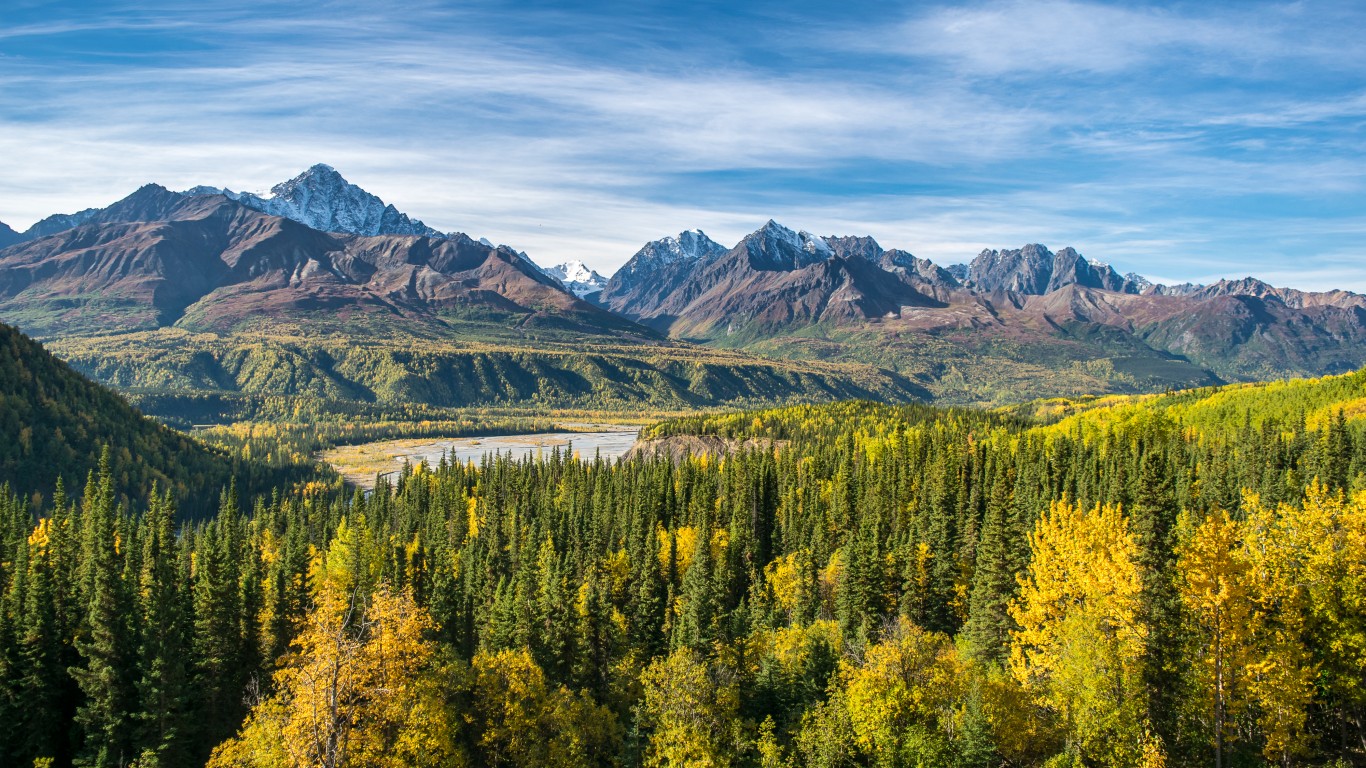
1. Wrangell-St. Elias
>Total land area: 8,323,146 acres
> Location: Alaska
> Privately owned land: 348,840 acres — or 4.2% of total park
> Recreation visits in 2020: 16,655 — or 0.02% of all NP visits
> 5-year change in visits: -79.3%
Wrangell St. Elias National Park is America’s largest national park, rising from the Pacific Ocean up to 18,008-foot Mount St. Elias. When combined with the land from the preserve, the park has 13.2 million acres — the same size as Yellowstone National Park, Yosemite National Park, and Switzerland combined. Four major mountain ranges meet in the park, which include nine of the 16 highest peaks in the U.S. Near the coast is North America’s largest sub-polar icefield, Bagley Icefield.
The thought of burdening your family with a financial disaster is most Americans’ nightmare. However, recent studies show that over 100 million Americans still don’t have proper life insurance in the event they pass away.
Life insurance can bring peace of mind – ensuring your loved ones are safeguarded against unforeseen expenses and debts. With premiums often lower than expected and a variety of plans tailored to different life stages and health conditions, securing a policy is more accessible than ever.
A quick, no-obligation quote can provide valuable insight into what’s available and what might best suit your family’s needs. Life insurance is a simple step you can take today to help secure peace of mind for your loved ones tomorrow.
Click here to learn how to get a quote in just a few minutes.
Thank you for reading! Have some feedback for us?
Contact the 24/7 Wall St. editorial team.